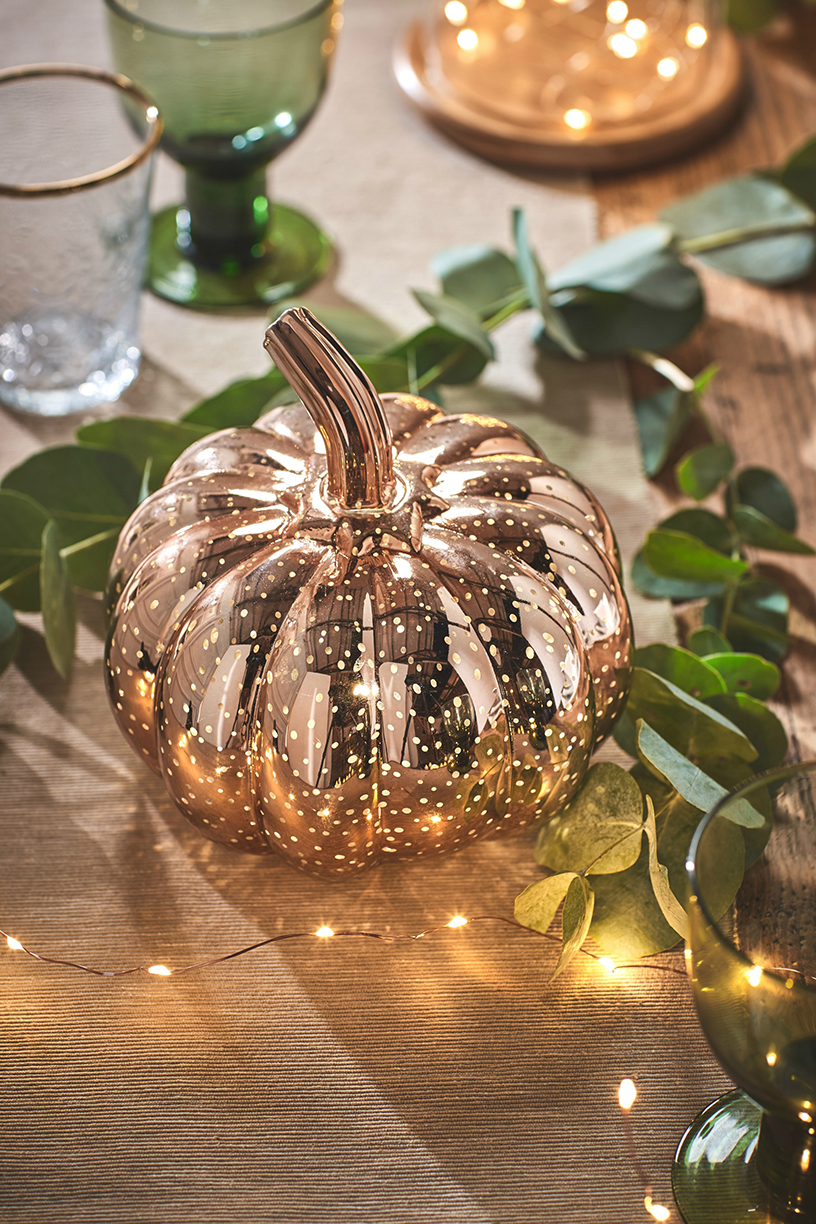For many industries, working from home has become the norm and the need to create a productive work environment is at the forefront of the minds of young professionals.
What better way to increase productivity than to outfit the perfect office space! Design professionals at Home Design Ideas have found some of the best and easiest ways to help you find your office style, so that the real work can follow. Whether you’ve got an entire room or just a tiny corner, this list should help spark the imagination!
Minimalism
Minimalism has been a consistent trend that works its way into many highly sourced styles, from Hygge to Transitional. For offices in particular, minimalism is key as it wards against clutter and helps promote a clear mind.
To keep your desk clutter-free, add in simple furniture and some shelving. Embrace a neutral color palette to really showcase the minimalist in yourself, and if you need to warm things up to avoid getting too stale, incorporate a touch of green with a plant or pieces of art.
This is the better way to keep it simple, clean, and perfectly in order.
Photo courtesy Pixabay.

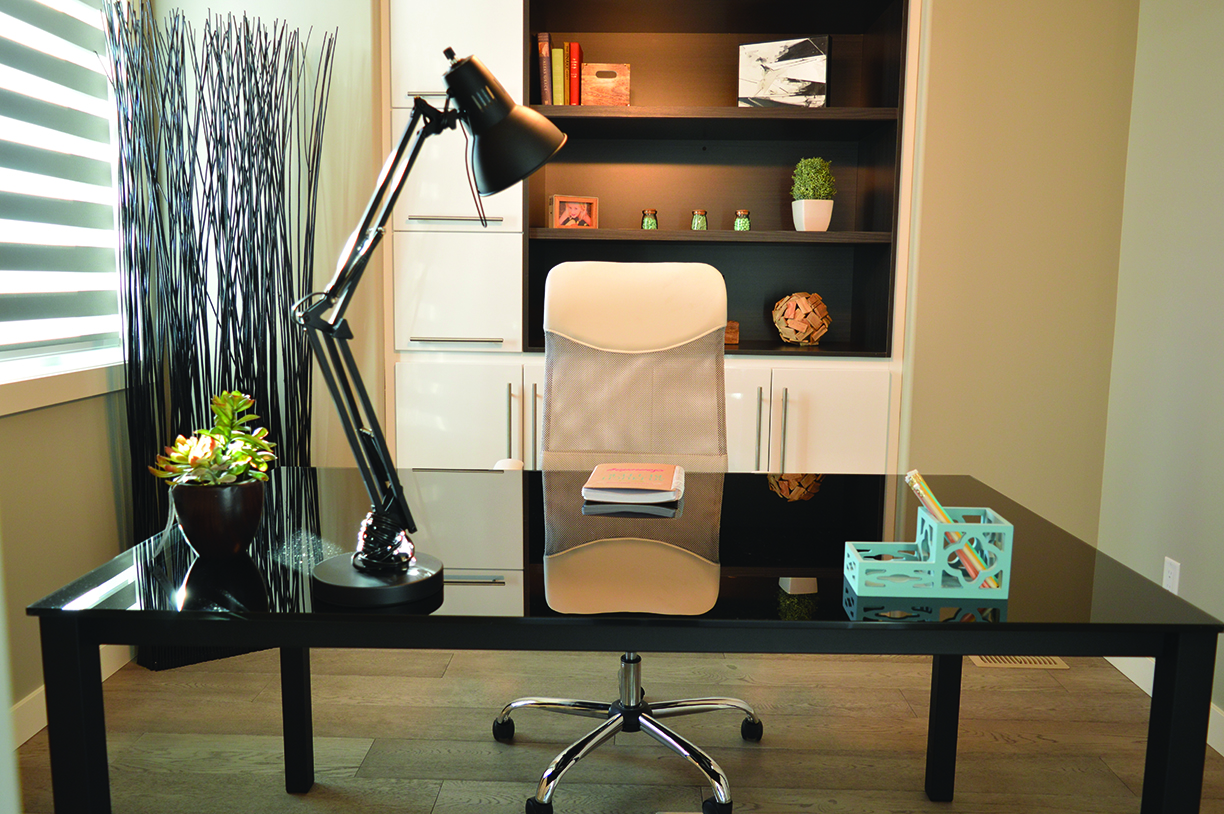
Black Goes with Everything
Much like its effect on wearable fashion, black happens to go with almost anything, from brass accents on black furniture to gray-black paint as an accent wall.
Using black is an easy, yet stylish method of design for those who want their office style to look effortless (because it was!). There are tons of ways you implement black color, including the utilization of fun prints.
“To totally transport yourself somewhere way more exciting than your work, try an exotic pattern, like the black-and-white zebra motif. A rattan chandelier adds texture and personality to the space,” according to Home Design Ideas.
Photo courtesy Pixabay.
Boho a Go-Go
Bohemian, like other classic styles, is one that is timeless and free spirited in nature — a perfect setting to give your mind a rest after the work is done.
Embrace your inner free spirit and decorate your office with anything that tells a story, has sentimental value to you, or that you picked up on your travels.
Often times these pieces are little motivational tokens, a reminder of what success and productivity lead to.
Add in a bold, patterned rug, color on color, and some plants to add to this overall energy.
For other tips, visit Home Design Ideas post here!
Photo courtesy Daria Shevtsova.

Homes grouped around a small collection of shops, churches, banks, a doctor’s office and a barber. It’s the way cities and towns developed. Today, a similar process is underway in Vancouver, Miami, Baltimore, San Jose, Memphis and many other cities, except expansion is as much upward as it is outward in a new vision of community considered a “vertical village.”
The concept found early proponents in Asia, where space is at a greater premium. Now, similar neighborhoods are taking shape in the U.S. and Canada, often in former industrial or commercial sites. In Memphis, Cross-town Concourse is rising in a former Sears distribution center and retail outlet the size of 25 football fields. In Atlanta, another abandoned distribution center is the foundation for Ponce Market, a mixed-use community adjacent to the Beltline. And in an era when retail seems to be threatened, shopping malls — not the familiar single-dimension covered expanse, but open sites inviting participation — are the foundation for vertical villages along with a mix of residences in multiple buildings and varied price brackets.
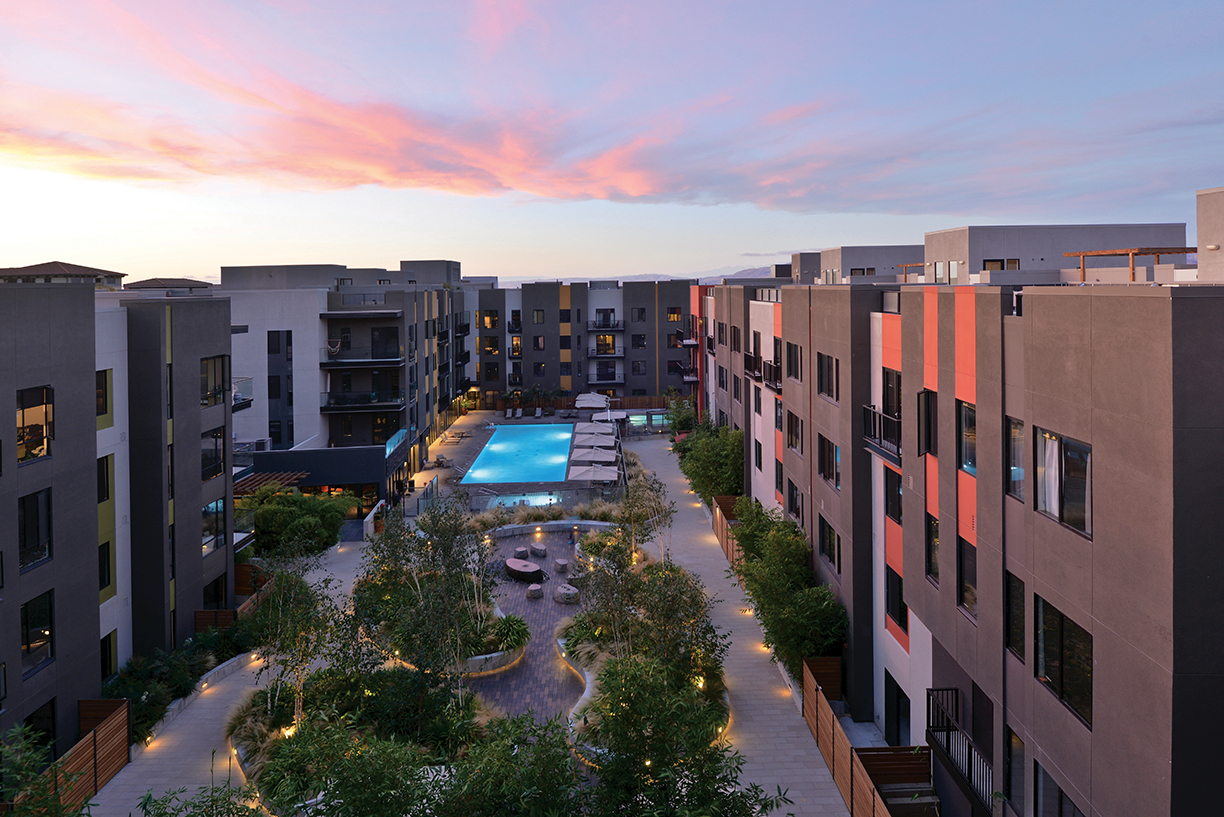
Misora Santana Row. Photo courtesy of Ankrom Moisan Architecture.
However, no matter how well meshed, retail and residential alone do not create community. Instead, the addition of parks, trails, green spaces, grocery stores, farmer’s markets, performance centers, galleries, venues for the arts, wellness, education and medical and dental facilities turn what might be simply a new mall into a community.
Arts and culture are a focus at Crosstown Concourse, which is a collaborative effort, focused on the arts. Here, residents are perceived as embodying the spirit of the place.
Santana Row in West San Jose, California, is another relatively new mixed-use community incorporating retail, offices and residential.
“Community is engrained in everything we do here at Santana Row,” says Collette Navarrette, West Coast marketing director for the developer, Federal Realty Investment Trust. “The center-wide amenities, highly engaged residents, and unique community events that Santana Row offers inspire and connect people in a meaningful and lasting way.
The concept of a vertical village might be mainstream for developers, but it’s still new to consumers. One of their biggest questions is whether the convenience and community will meet their needs and most especially their values, according to data scientist David Allison, who heads an eponymous global advisory firm. He says it all comes down to values. “What we value determines what we do.”
Allison brings new insights into con-sumer behavior. He contends traditional demographic parameters of age and gender do not work in today’s market. “People really don’t act their age anymore. Gender rules and norms are less important than ever before. In fact,” he says, “we live in a post-demographic era. Allison’s firm has amassed data from almost half a million people regarding 40 core human values as well as several hundred other needs, wants and expectations. Their database, Valuegraphics, shows that people in the traditional demographic categories have little agreement — only 13 percent of the time for Boomers, 11 percent for Gen X and 15 percent for Millennials. Humans overall only agree 8 percent of the time. Instead, Valuegraphics data uncovered 10 huge groups or architypes who agree on pretty much everything.
To profile those drawn to a vertical village, Allison combined this data with additional research among 1,864 North Americans who indicated interest in such a community. The results reveal several major interest profiles.
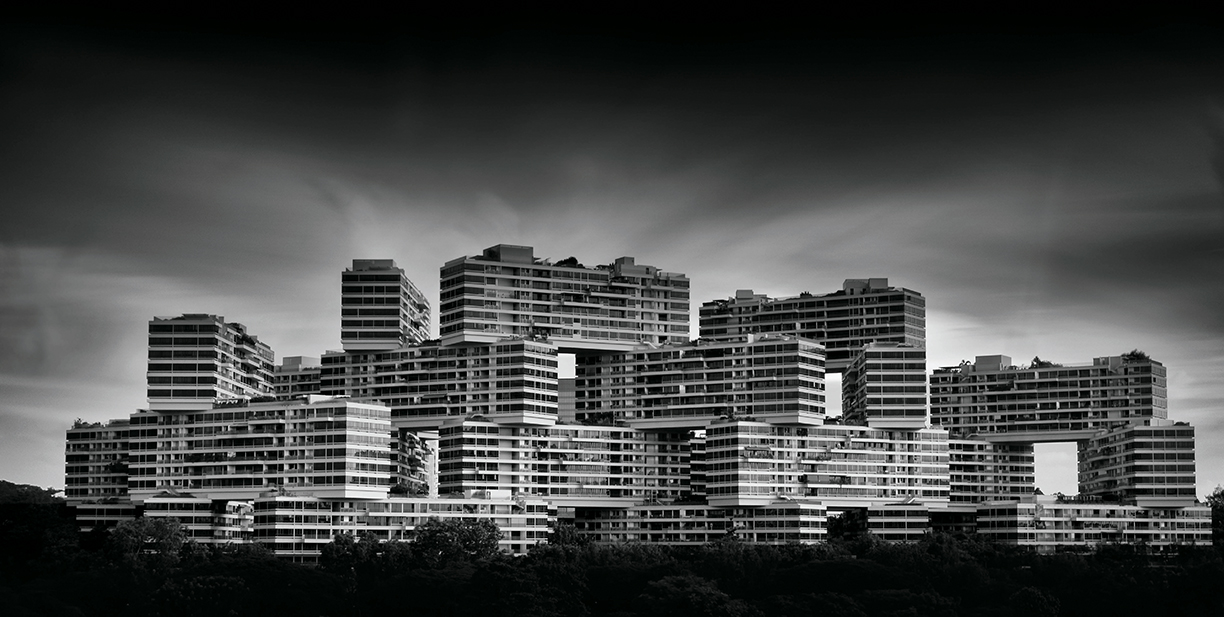
The Interlace in Singapore, designed by Ole Scheeren and Oma, established a new vision for urban residential living. Photo courtesy of Mike Cartmell.
Local Experience
Chasers Approximately 32 percent literally pursue experience after experience, but they like to have those experiences close to home. “They want to do things they love again and again,” says Allison. Loyal to things that trigger a sense of belonging, they are apt to join a team or club and love to see the same faces. Quality of life often means quality of social life. A sense of belonging is important and they like the idea of multipurpose living. Allison says for this group extra thought should be given to programming. A 3D walkthrough of a yet to be finished building would have great appeal.
Workaholic Investors
Comprising 19 percent of potential residents, this group values financial security, material possessions and wealth. They are likely see a place in a vertical village as an investment. Allison says, “They are thinking long term about all of the component parts of the offering.” They are likely to be attracted to the proximity of amenities. Who lives in the building could also be an incentive for them.
Creative Savers
This group, which comprises about 16 percent of the sample, gravitates to places that will foster their own creativity. They accept potential financial challenges presented by a creativity-centered life. They are likely to have children and are attracted to inspiring design, cozy common areas and quaint trails meandering through parks, according to Allison.
City Loving Environmentalists
The last of the major archetypes, this group sees this style of community as being better for the environment and is motivated to reduce their carbon footprint. They love city living but appreciate and value of parks and green spaces. Highly educated and loyal, they are attracted to diversity. Family and relationships as well as health and wellbeing are also important to them.
Another group, about 18 percent of the sample, is composed of varied smaller architypes, which indicate going vertical might represent a substantial cross section of consumers.
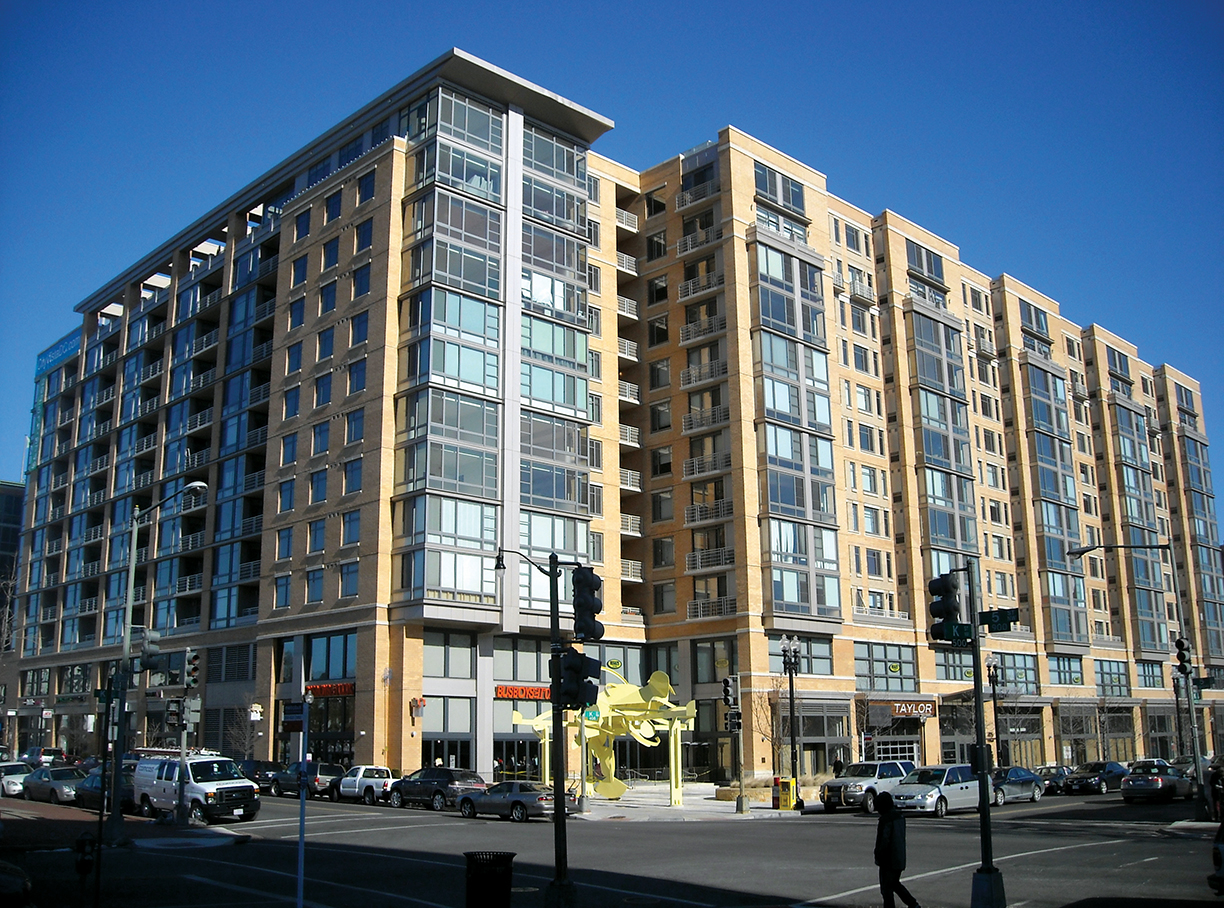
CityVista, a mixed-use development, located at 475 K Street, N.W., in the Mount Vernon Square neighborhood of Washington D.C. Photo courtesy of Creative Commons by AgnosticPreachersKid.
Tropical decor is a bold statement that can be difficult to balance. Avoid over-the-top details and learn how to embrace muted accents and elements that elevate a space without making it too whimsical.
If tropical brings to mind luxurious retreats and dream vacations, you may want to incorporate the look into your home. Here are a few tips for bringing tropical to a high-end level that you’ll love throughout the seasons.
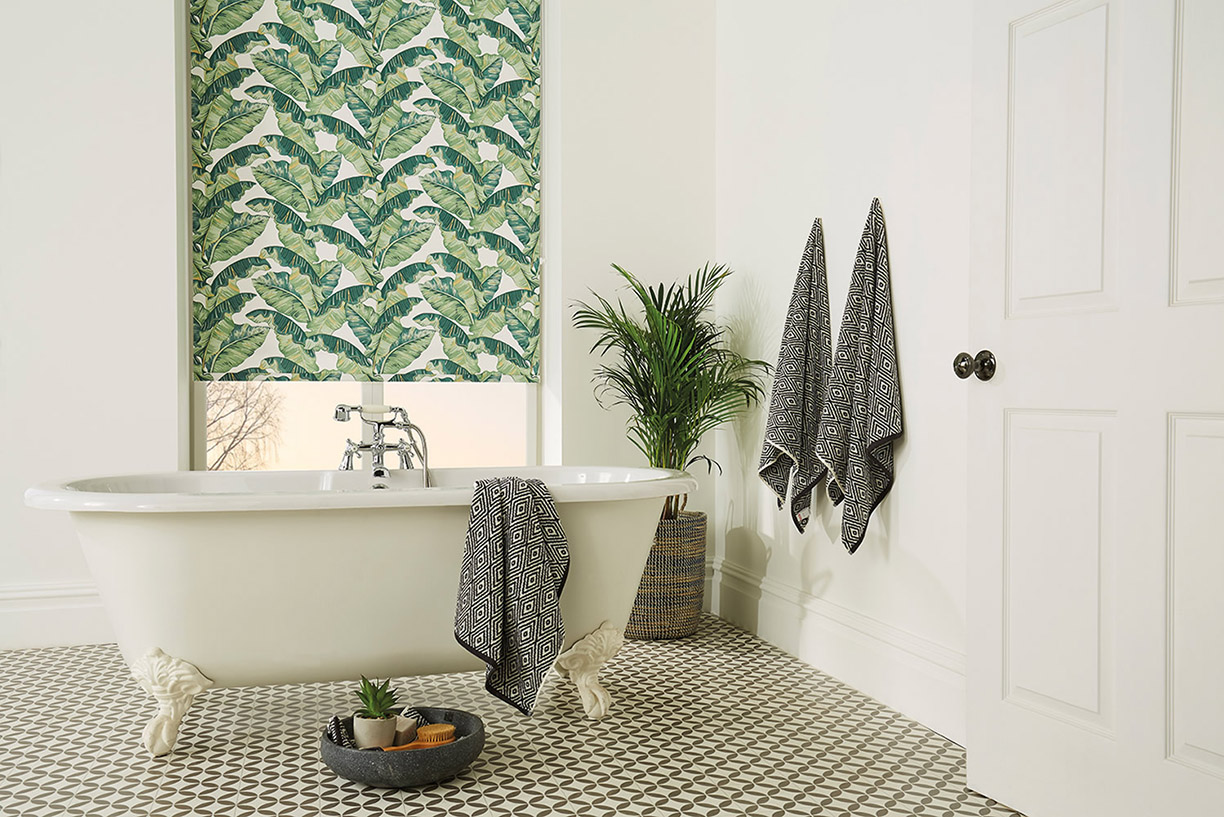
Photo courtesy of English Blinds
Bold Wallpaper
Most tropical decor involves a playful wallpaper or large piece of art. There are a variety of quality wallpaper brands that can help create an oasis of color and charm for your space. Have fun with your wallpaper, there are many to choose from and it is the quickest way to transform a space.
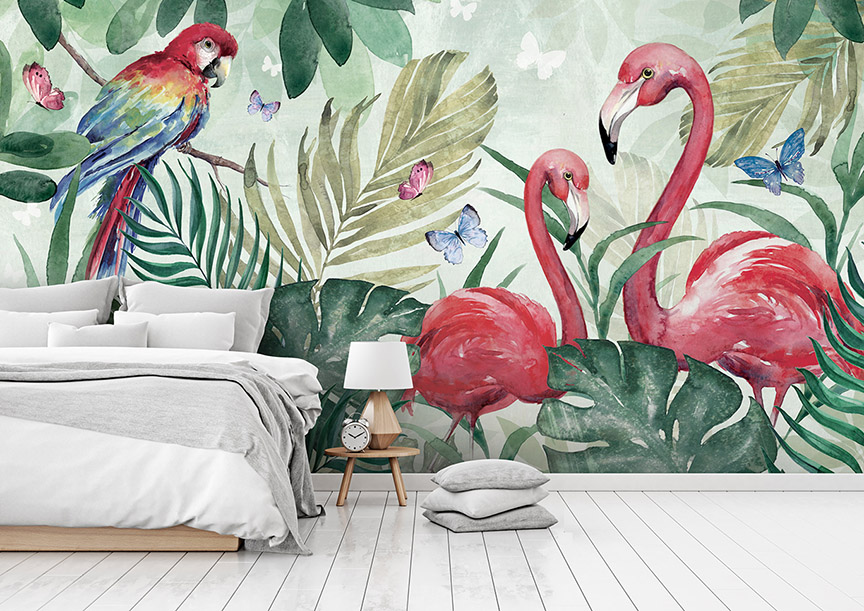
Photo courtesy of Wallsauce.com
Add Foliage
Tropical prints are just the beginning. If you are looking for an authentic feel and want to avoid a staged look, incorporate real tropical greenery that will play off accents, prints and other details in your decor. A snake plant or peace lily truly capture the tropical feel, yet they are low maintenance and easy to care for. Greenery can also bring out muted tones that might appear in prints.
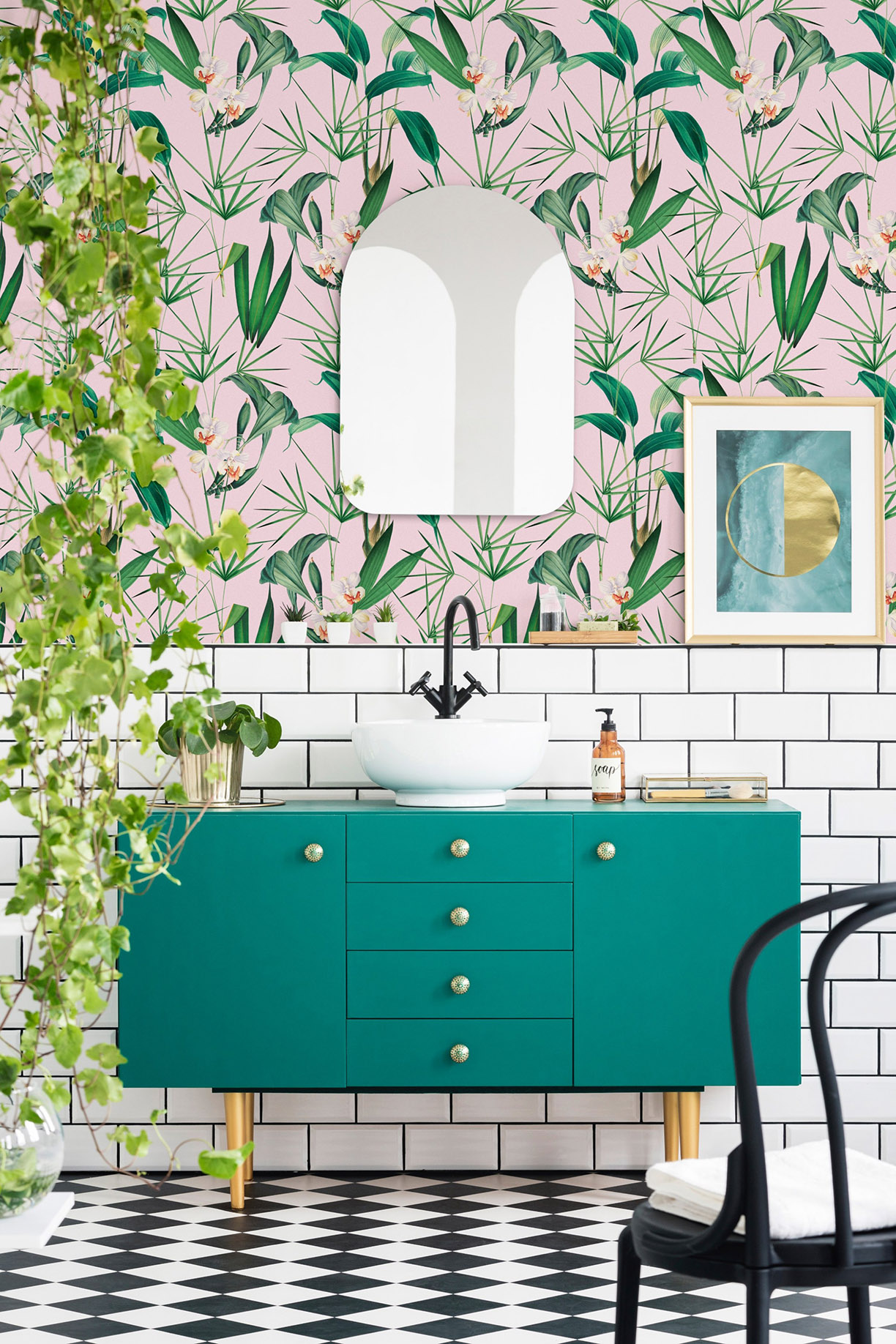
Photo courtesy of Mindthegap
Try Traditional
Fun details can be luxurious. Black and white, monochromatic, or muted prints can still embrace tropical imagery. A palm tree wallpaper or a pink flamingo statute can be toned down in terms of color, allowing more flexibility in your decor. Don’t shy away from traditional items but the balance between just enough and too much is delicate.
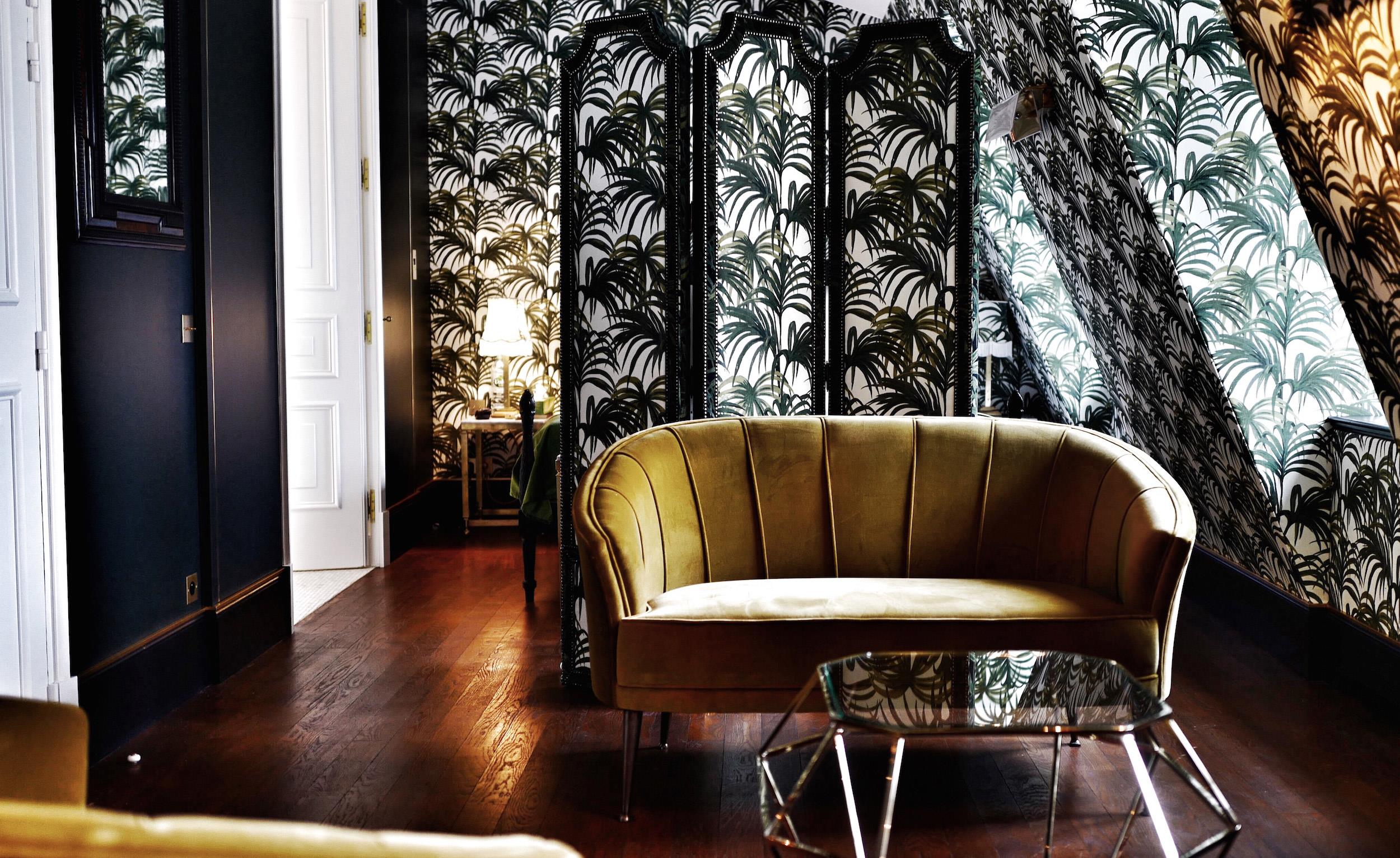
Photo courtesy of Brabbu Design Forces
Keep it Neutral
Neutral tones help to balance bright colors and bold shapes that appear in tropical wallpapers and prints. If you’ve decided on a statement wallpaper and you’re worried about overwhelming your senses, it helps to choose natural accents such as wood furniture and flooring. Light grays and white also tone down the intensity of a space.
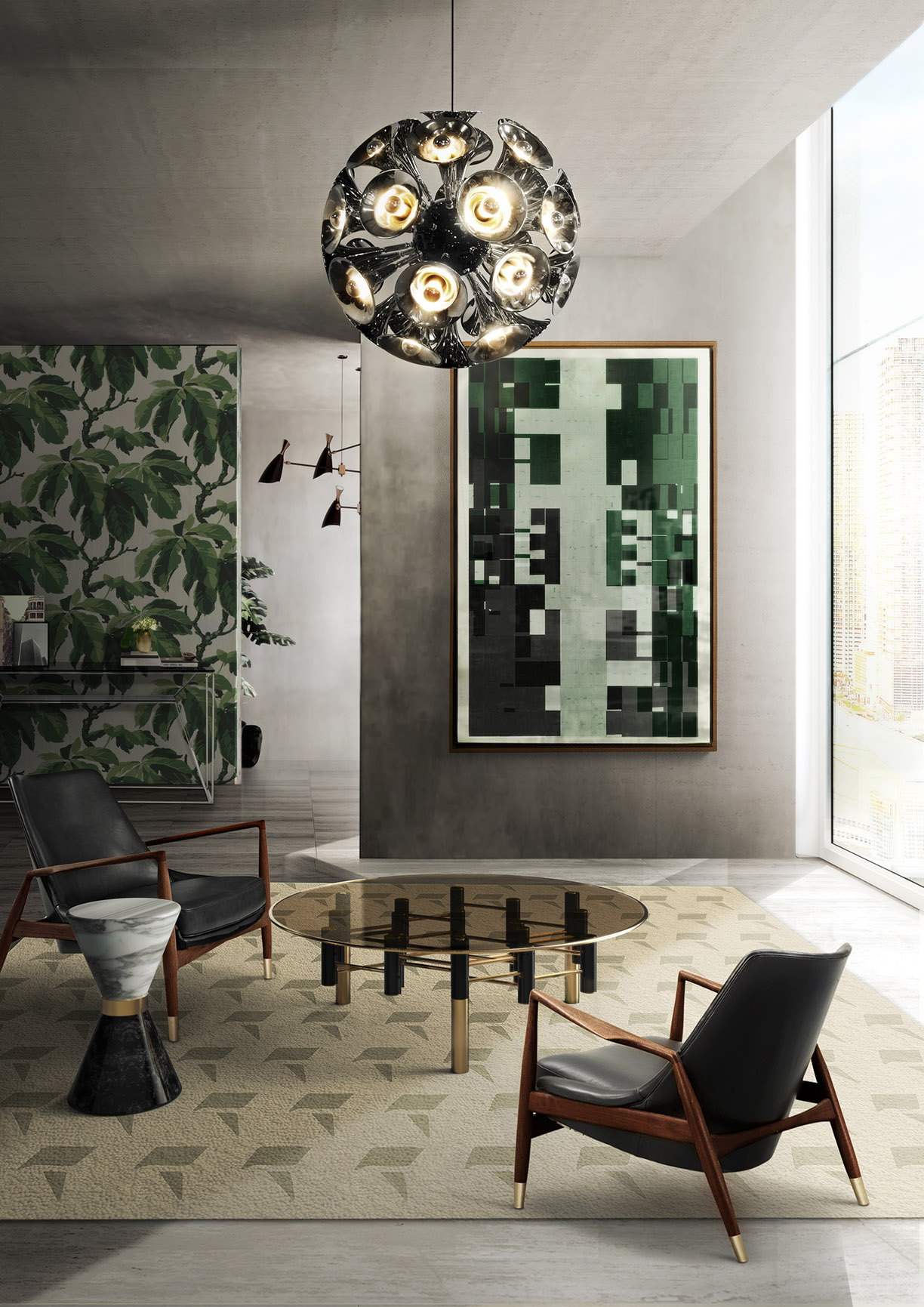
Photo courtesy of Essential Home
Mix and Match
If you want to truly embrace the tropical sentiment, be bold and confident with your choices. For an earthy tropical feel, mixing a variety of prints that play off of each other with color palettes that work together will bring your space to life. Mixing and matching prints, designs and elements can come together to create a luxurious balance.
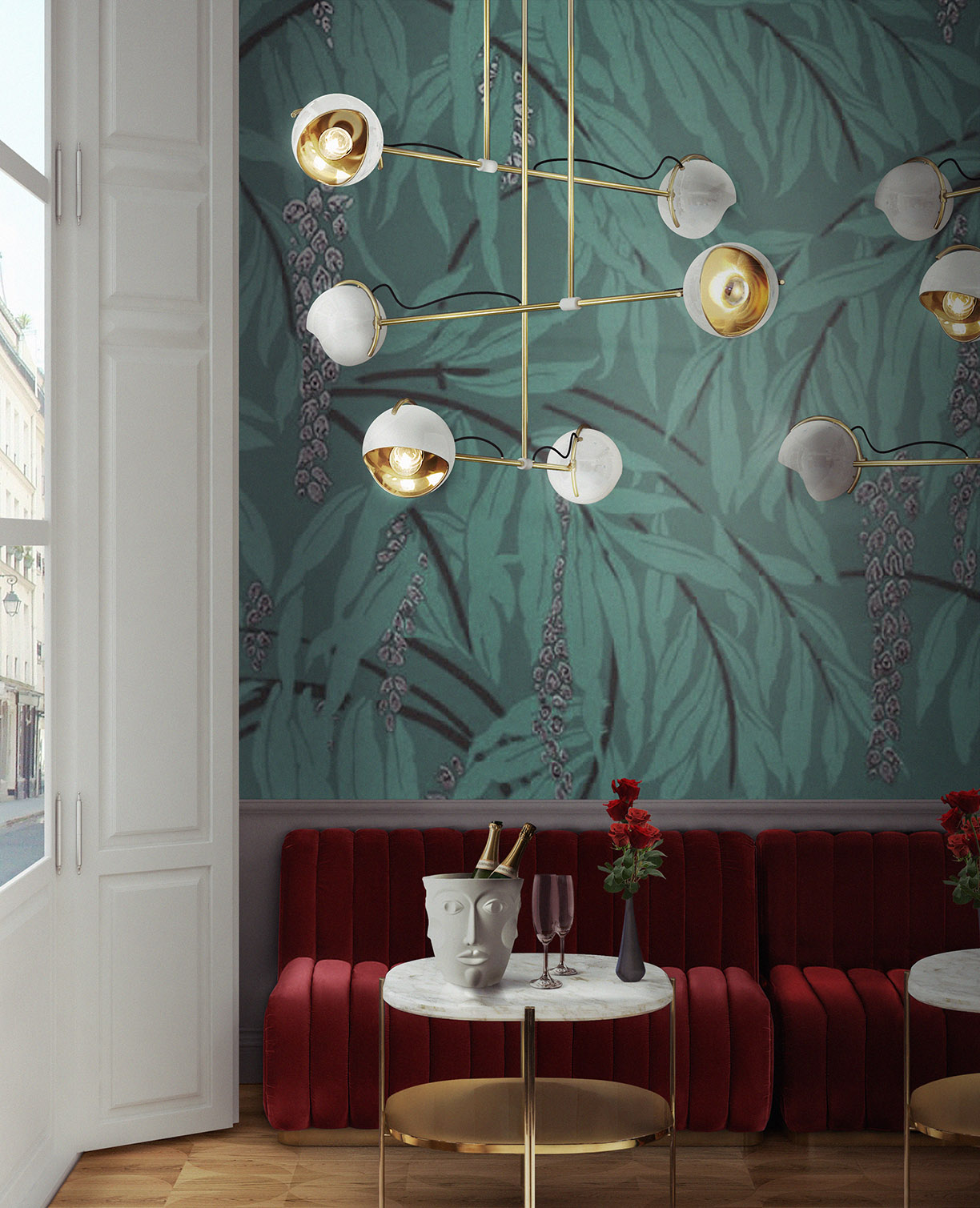
Photo courtesy of Essential Home
Check out these articles with simialr content; Bold Wallpaper, Wallpaper That Will Stick Around, How To Weather The Decor Dilemmas of Modern Farmhouse, Tropical Modernism Makes a Comeback in Hawaii.
A recreational, or rec, room can be the perfect space to have fun and enjoy time with others. But recreation can have many different forms. From a game room to a movie theater and so many other possibilities, it can be difficult to find the perfect design and style for you. Here are four steps that’ll help you do so:
1. Assessing the space
Whenever designing a room from scratch, it’s always a good idea to assess the size and dimensions of the space before anything else. Regardless of the room itself, the concept should always be centered around comfort. The first and foremost approach should be creating an inviting atmosphere for family and friends. Make sure to add ample seating, either spaced out for a larger room or closer together in a room with less space.
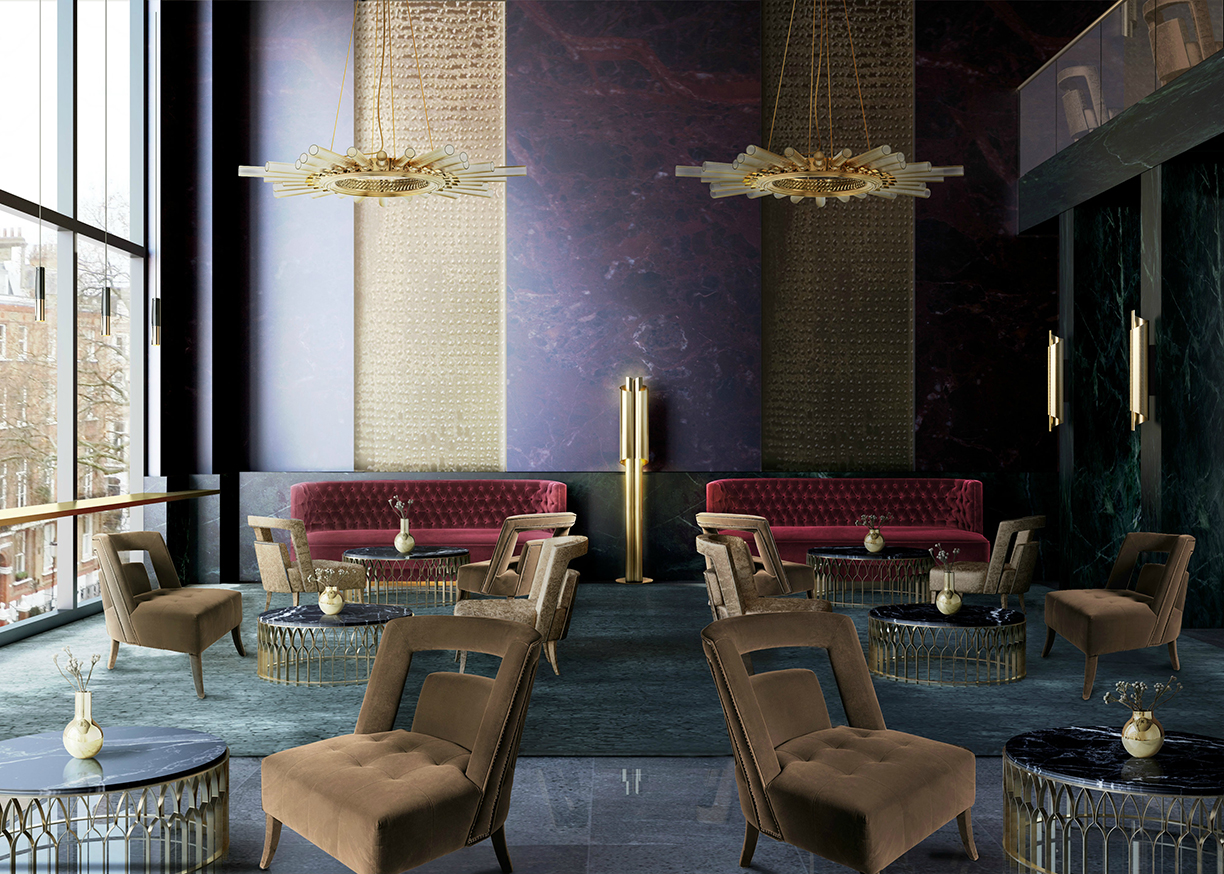
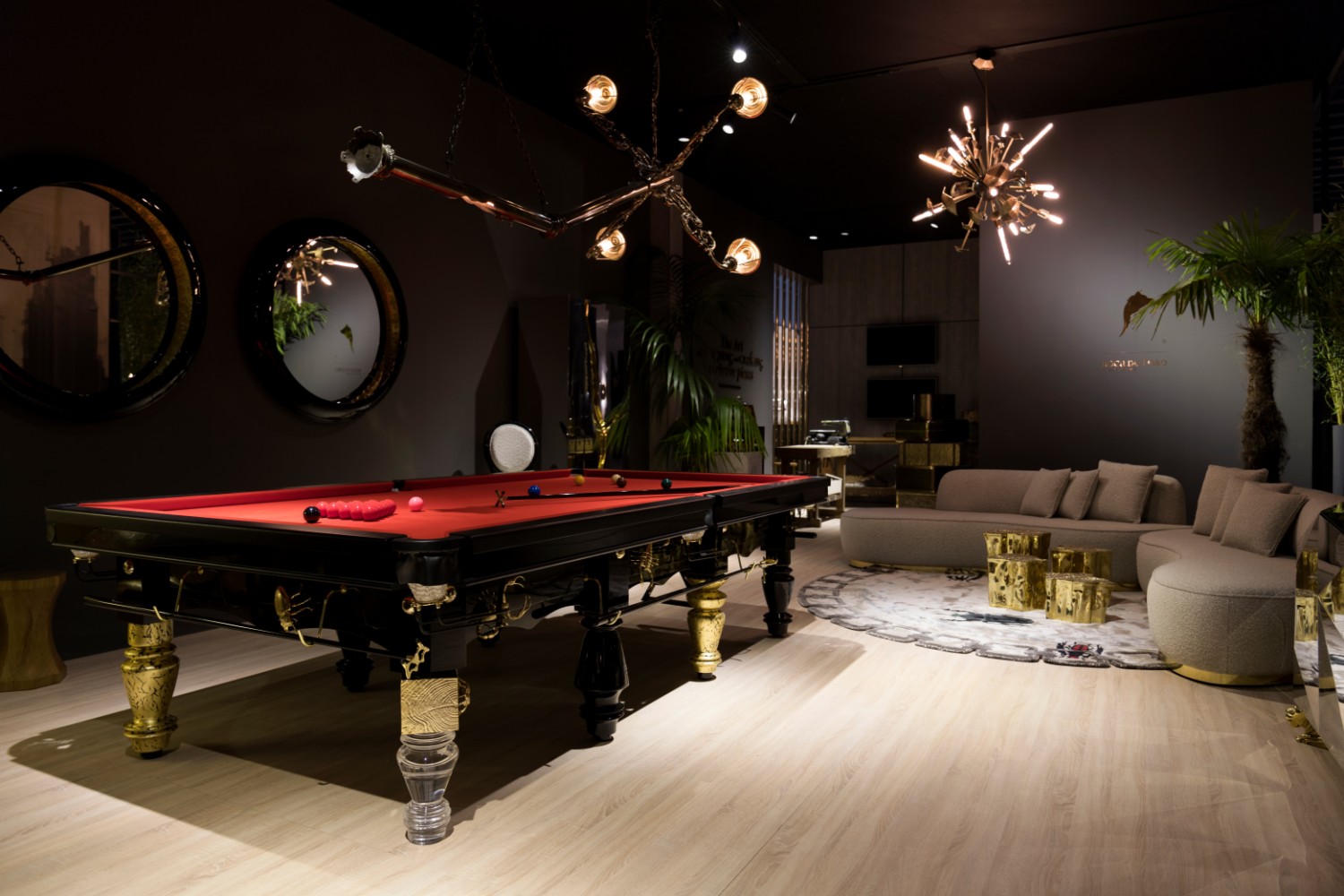
2. Finding the Purpose
It’s always crucial to think about the room’s purpose. For a more family-friendly setting, more comfortable seating and a fun atmosphere may work better. For those who appreciate a stronger sense of sophistication, a more refined look may be more suitable. For this style, an antique pool table with a polished finish can do just the trick. Darker walls add a dramatic backdrop to the space, incorporating the style even more so. If you’re a television junkie, a movie theater with ample seating may be more useful. Whichever purpose the room is used for, make sure it’s suits your interests and hobbies.
3. Incorporating Your Style
Alongside the space’s purpose, style is another crucial factor to consider. For a more sleek, modern design, install a flatscreen television to the wall and provide seating with a minimalist decor. Light fixtures should also be taken into account — modern light fixtures can add the perfect touch to finish off the room’s design.
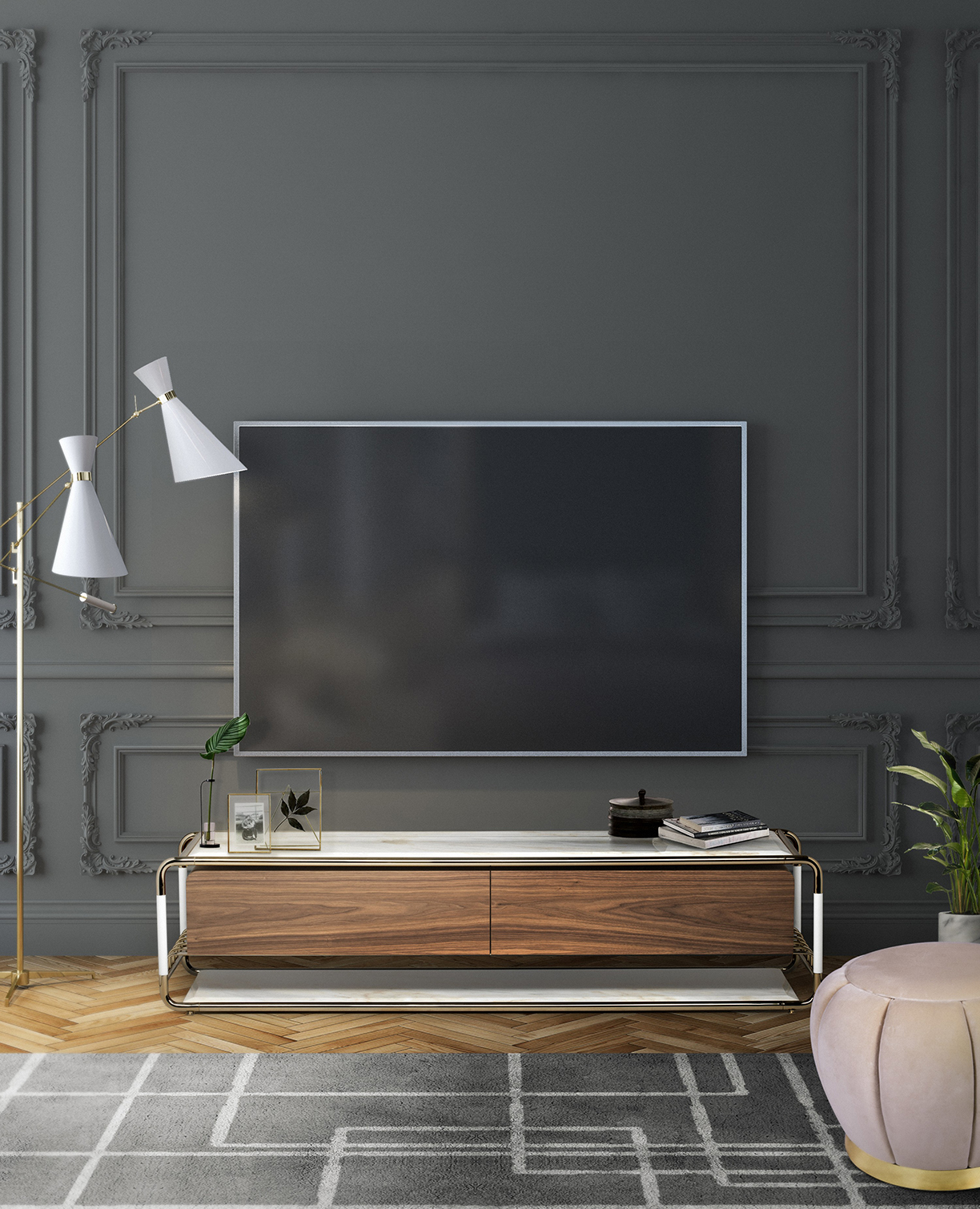
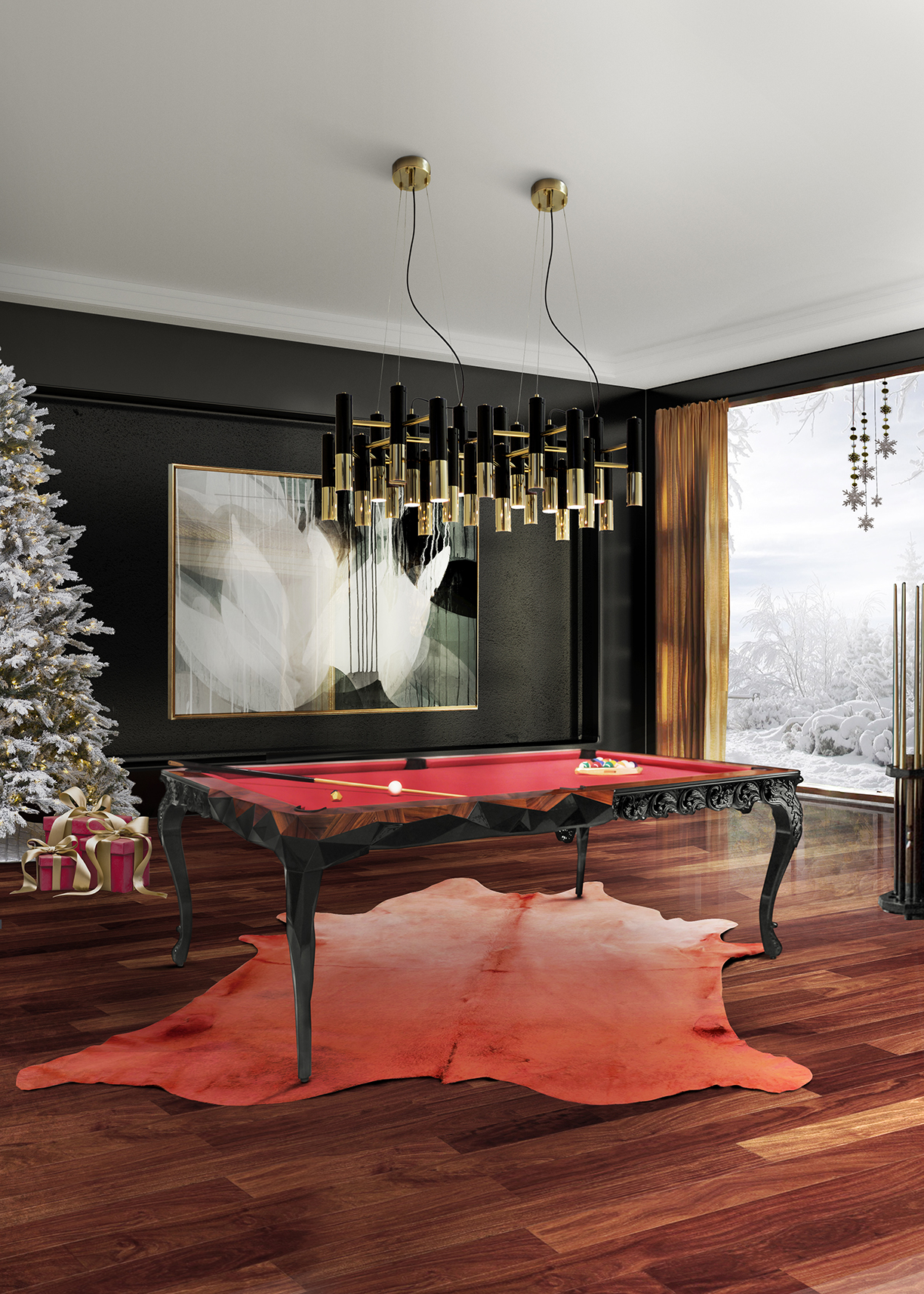
4. Have Fun With It
The most important aspect of any rec room is to ensure that it serves its purpose, while also keeping a playful vibe. A bold color palette with a variety of textures and decorations can bring the room to life. Add funky decorations and avant-garde furniture to invite creativity into the space. In the end, remember to just have fun with it!
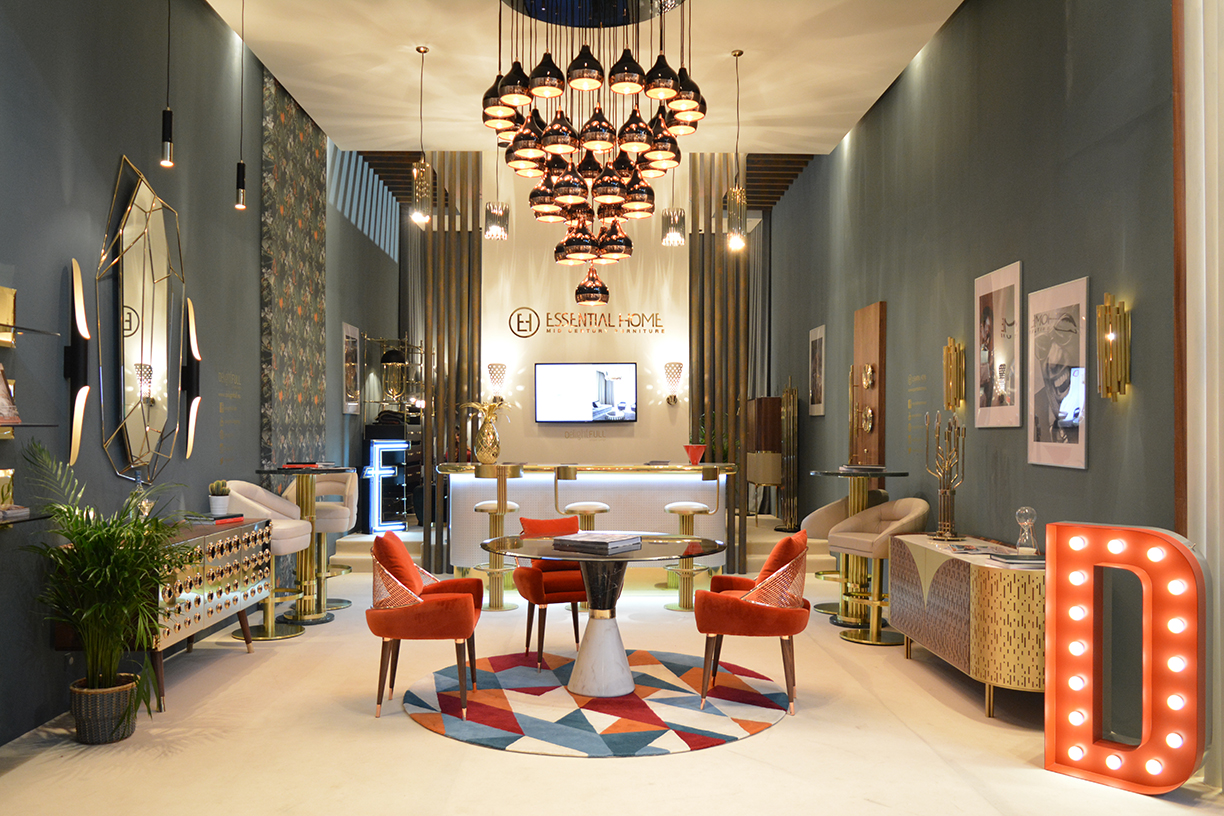
Although the interior design trends are headed toward bolder, more vibrant colors, neutral greys and tans are always in style. ‘Neutral’ doesn’t necessarily mean boring: here are three different ways to make a room with less vibrant colors still have a bold impact.
1. Dynamic Lighting
Although rooms with neutral colors can be warm and inviting, it can also end up being boring and dull. To prevent this from happening, look toward dynamic light fixtures. Avant-garde light fixtures like the chandeliers in this space offer a bright and eye-catching design. The additional brass fixtures diversify the textures in the space. Although almost all of the colors are neutral, the design of the room is anything but dull.
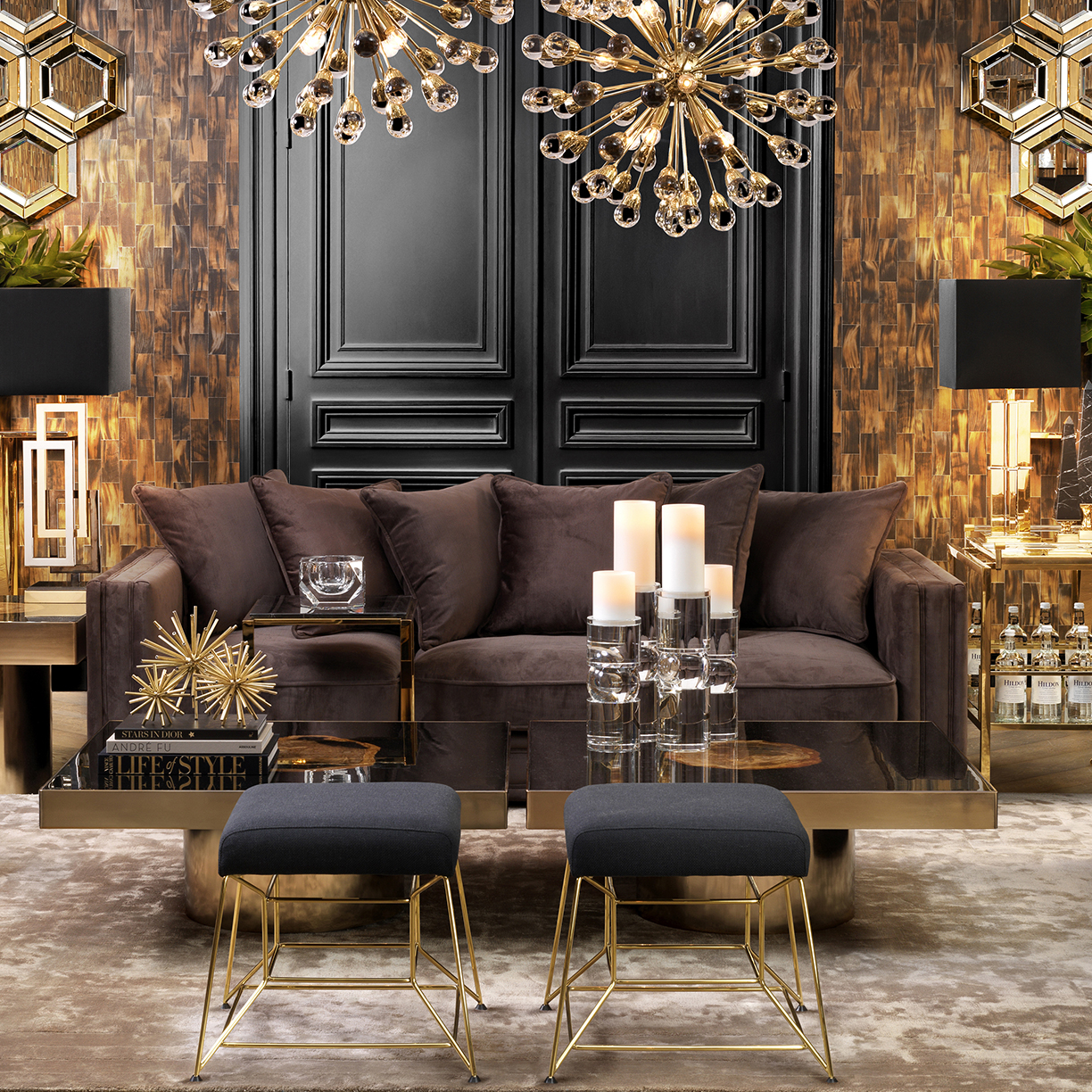
Photo courtesy of Sweetpea Willow

Photo courtesy of Brabbu Design
Don’t count out natural lighting, however. Bright sunshine can bring the neutral colors to life. The high glass doors allow for the natural light to shine through, and create a more lively and vibrant room in the process.
2. Contrast of Colors
The trick with designing rooms with neutral colors is a variation of those hues. Too much of one shade can make the entire space blend together, creating a boring look. Different shades of the same tones, however, can create a more vibrant style while also keeping a calm and comfortable atmosphere.
Although keeping with the neutral tones, this room stays bright and lively with its variation of those colors. The dark gray cabinets and chairs against the white brick walls creates a striking composition that’s both comfortable and eye-catching.
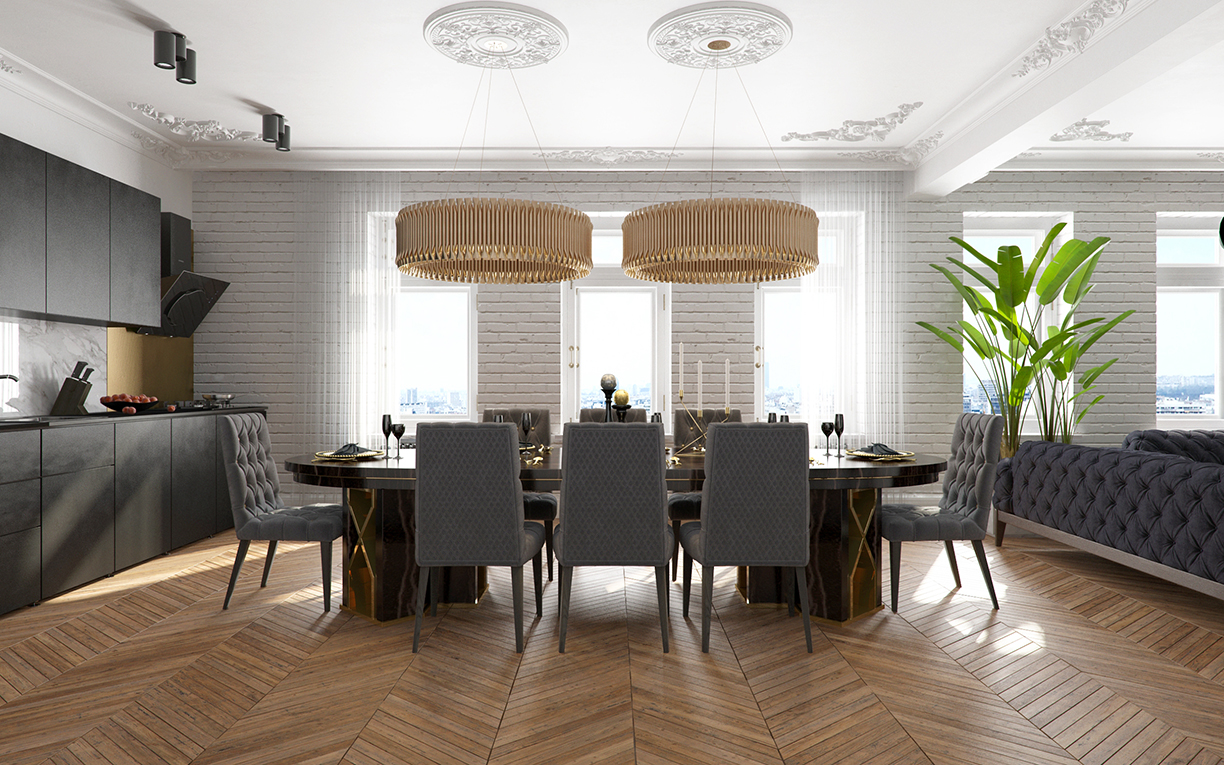
Photo courtesy of DelightFULL

Photo courtesy of Wallsauce
3. Varied Textures
To allow more variation in a space without getting too busy with the colors, look to diversifying the textures. Include different fabrics, tiles, stones, wood and more to add a more attractive style. The leather couch, painted mural on the wall and glossy wooden floors add variation to this space. But no matter which are used, the diversity of the textures will always give the room a beautiful, elegant design.
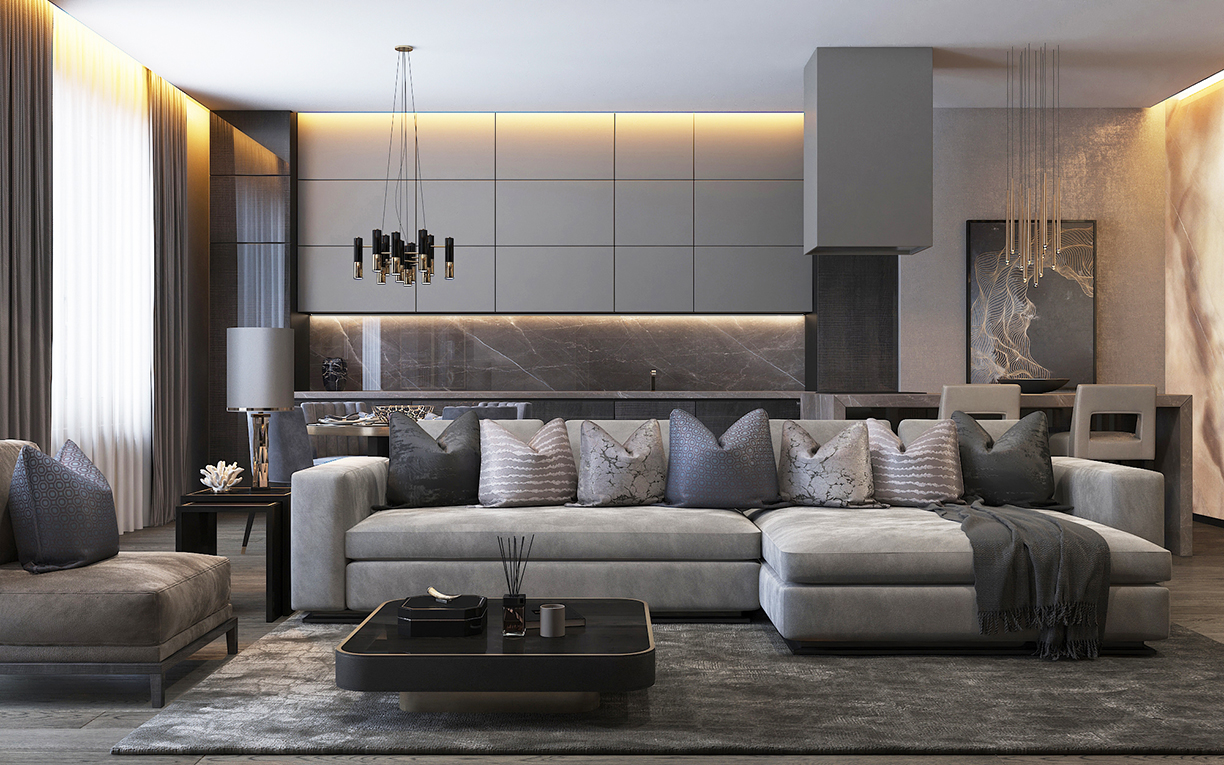
Photo courtesy of DelightFULL
With clean, sleek and modern furniture being the current trend, those with different styles can feel left out. But if your preference is furniture that’s more antique, you can have it both ways. These pieces can add beautiful conversation pieces for each and every space, while also staying on-trend.
This antique table adds so much character and charm to the space. With a unique design and intricate detail, the table adds a pop of color and a one-of-a-kind piece to bring the room together. Benches on the side create clean lines that add a subtle modern twist. Add a decorative lamp and some miscellaneous decorations on top to complete the look.
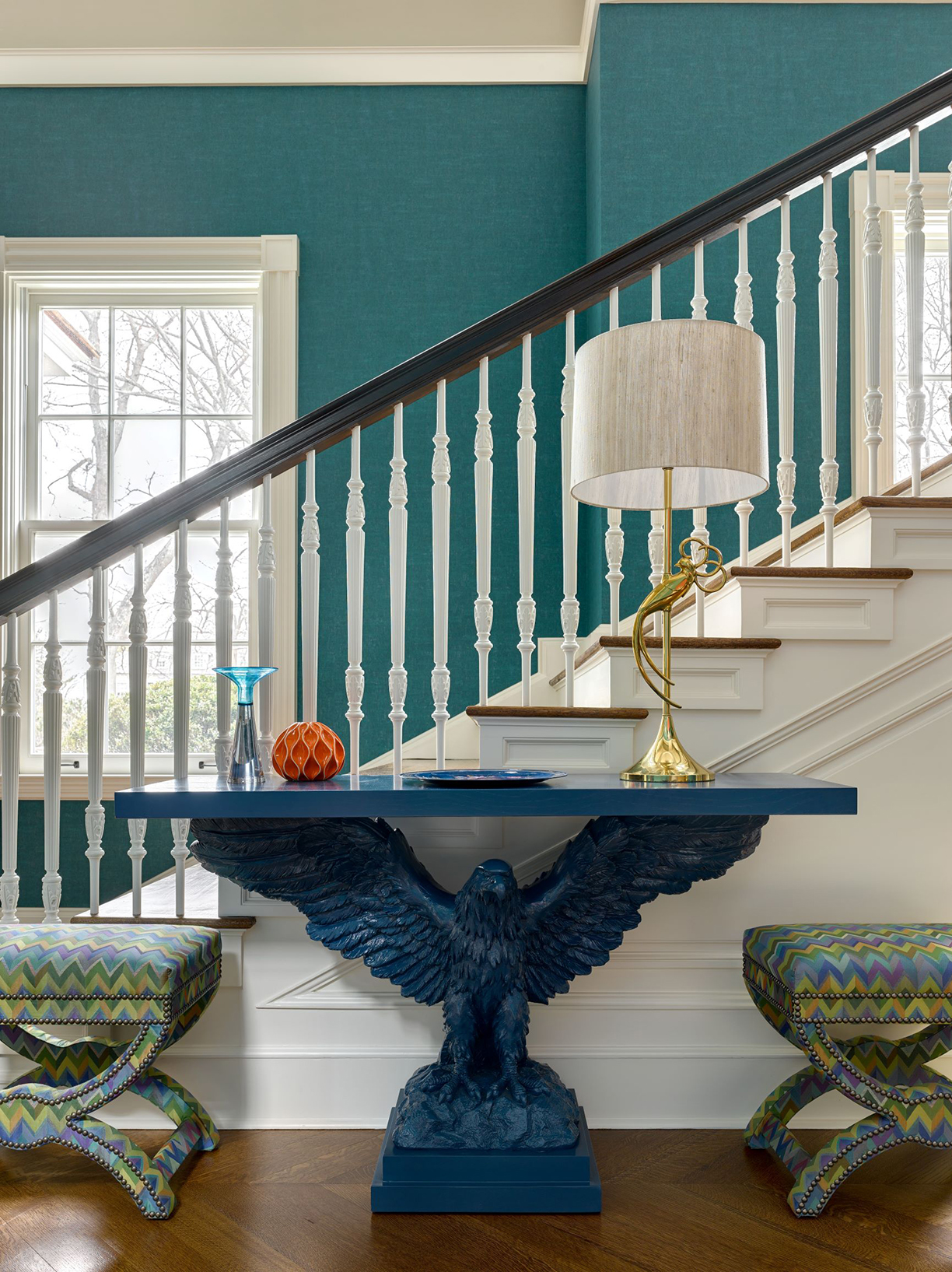
Photo courtesy of Covet House
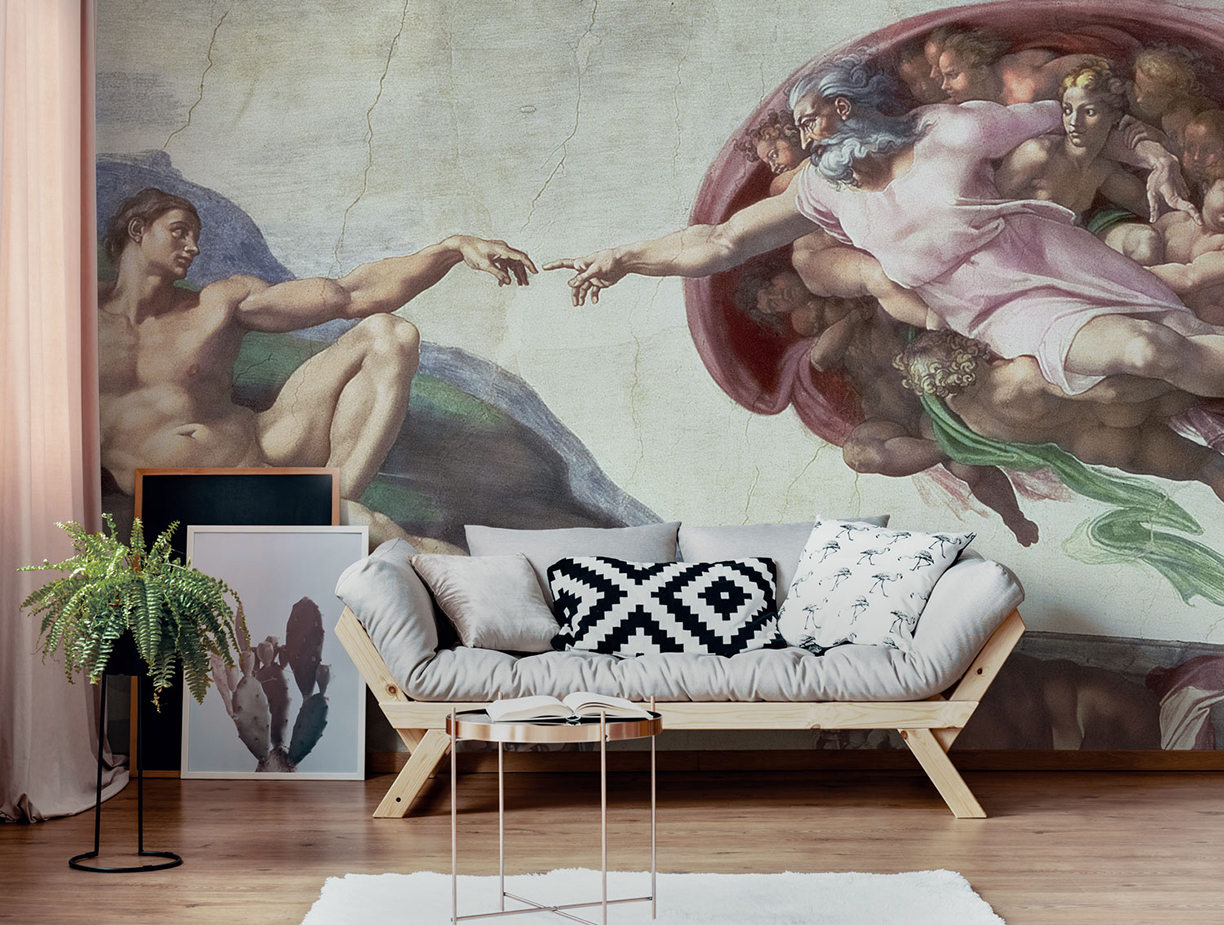
Photo courtesy of Wallsauce
For more of a juxtaposition between the antique and modern styles, look toward bold representations of each. The mural on the wall is of Michelangelo’s painting on the ceiling of the Sistine Chapel. As one of the most famous pieces of classical art in the world, it adds a beautiful antique look to the space. Pair it with a modern couch and coffee table for a beautiful composition of both styles.
For a more antique look with less modern accents, look to rustic furniture, walls and floors. This space has an old world charm, and the cabinet’s bold yet faded color add to this style. The rugged wooden floors consisting of different hues contribute to the rustic charm as well. Add greenery and a beautiful mirror to bring the space fully together. The cabinet below has more modern accents to balance the antique style. The bold, retro lamps and decorative wallpaper create an eccentric character to the room.

Photo courtesy of Orchid Furniture
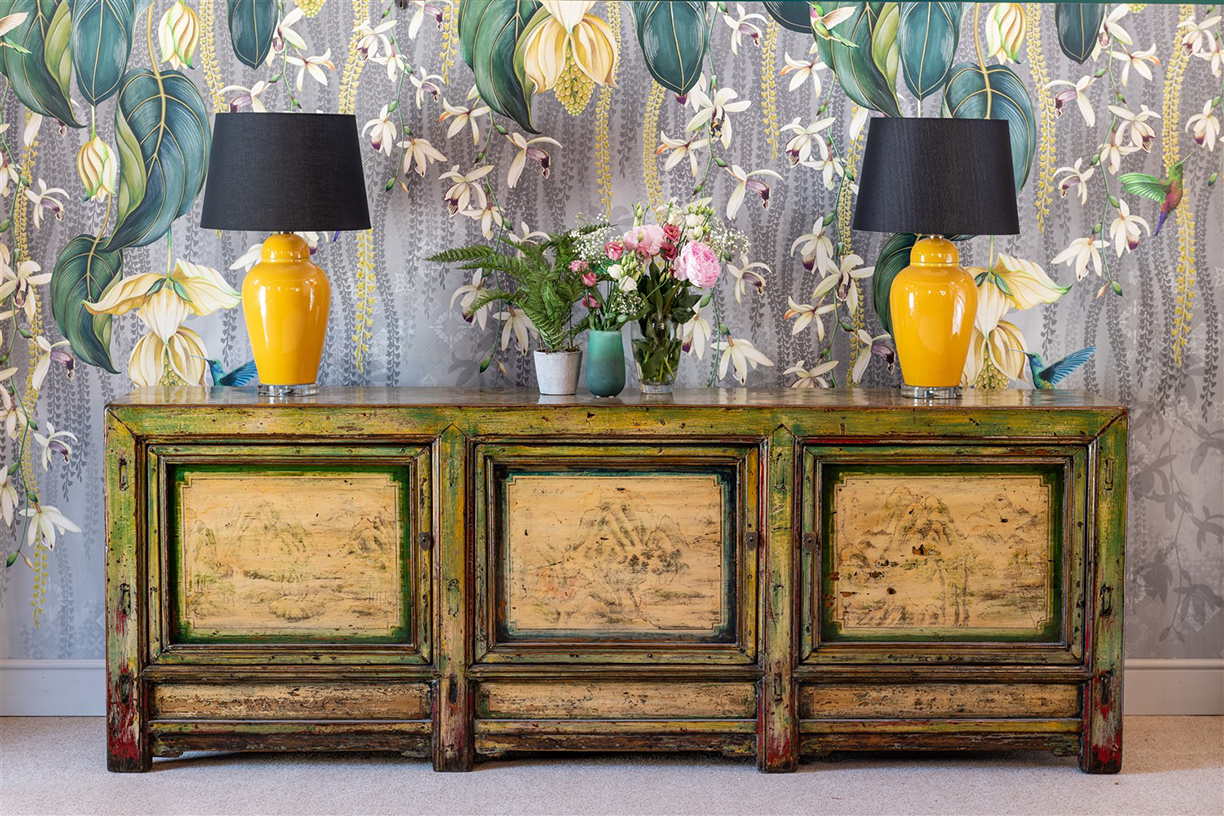
Photo courtesy of Orchid Furniture

Headshot courtesy of Victor Affaro
From the Jumby Bay private island in Antigua to the palatial Palacio Tangara hotel in Sao Paulo, Brazilian architect and designer, Patricia Anastassiadis has collected a long, robust list of high profile international projects. Anastassiadis blends her love for anthropology, art, nature and history to create timeless and minimalist furnishings that create a dialogue.
Most recently, she was chosen to be the Creative Director to design Artefacto’s highly-anticipated 2019 collection, which hit South Florida showrooms this past summer. Unique Homes spoke with Anastassiadis to discuss her journey to create Artefacto’s 2019 collection, her style and the future of design in a changing world.
What was the first time that you ever thought about being a designer? Did it coincide with your original career path?
As a child, I was always put to sleep listening to Greek Mythology stories told by my father (who is Greek) and that exposed me at a very early age to the power of storytelling and the classics. My mother, on the other hand, is a fashion designer, a writer, and a painter. So as a teenager, I’ve always known that I would take part in the creative business … At 17, I decided to apply for an architecture major as we’ve realized that architecture has always been a reference and a part of my life.
Why do you do what you do? What about interior design draws you into it doing it every day?
Architecture itself tells a beautiful story about our time on this planet and the relationship we establish with our surroundings. That idea completely amazes me.
I don’t make a distinction between my work as an architect and my work as an interior and product designer. They are all extensions of my work. For me, it is all connected as I enjoy working with design on different scales, but most importantly, I like living with the idea of creating something that puts you in contact with another human being.
How would you describe the style of the new Artefacto collection?
This new edition is the continuation of the previous one launched in spring 2018 and our aim was to promote a dialogue between the two of them. I believe a good design piece ruptures its timeline without losing its aesthetic or functional relevance. Thus, my intention with this edition is to design furniture that is truly timeless. We are proposing a more holistic aesthetic linked to values that, despite the strong visual appeal, are not a synthesis of a trend.
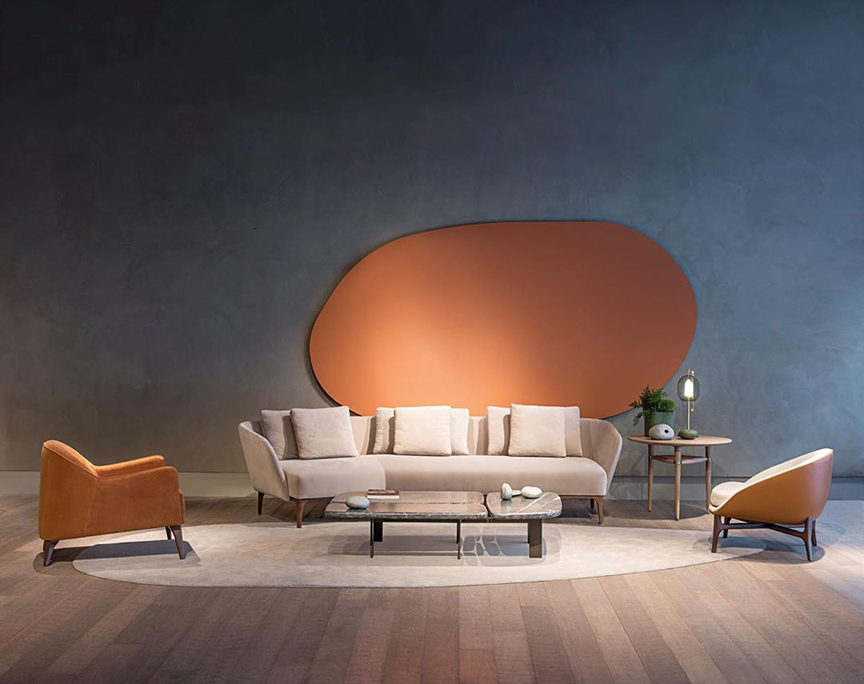
What do you draw inspiration from to form your own unique perspective?
My inspiration comes from nature, materials, architecture… All those different elements are part of the repertoire that moves me to create and design products of my own.
What can a client expect from you when you take on their project?
What marks our work is how we evaluate the location where the project will be held. I take into account the cultural characteristics; the local materials we can work with; the vernacular architecture of the place, and how people interact with it or behave there… I also really enjoy exploring and connecting materials, textures and colors… The aim of my work is to turn it all into an enhanced experience that will bring out the real essence of that location to visitors.
What recent changes in the industry have you noticed and want other designers to take part in?
I’ve been really concerned with the environmental issues, and consumption plays a big part in it as we’re also discussing discard. I believe we’ve really passed the time where we could just raise a flag over the problems we’ve been noticing in the world as a consequence of our damaging exploration of natural resources. We’re right now sensing an imminent call for action regarding the environmental issues. Change really is urgent. It’s essential that we, as designers and architects, are able to engage in the cause and make conscious choices when developing a project.
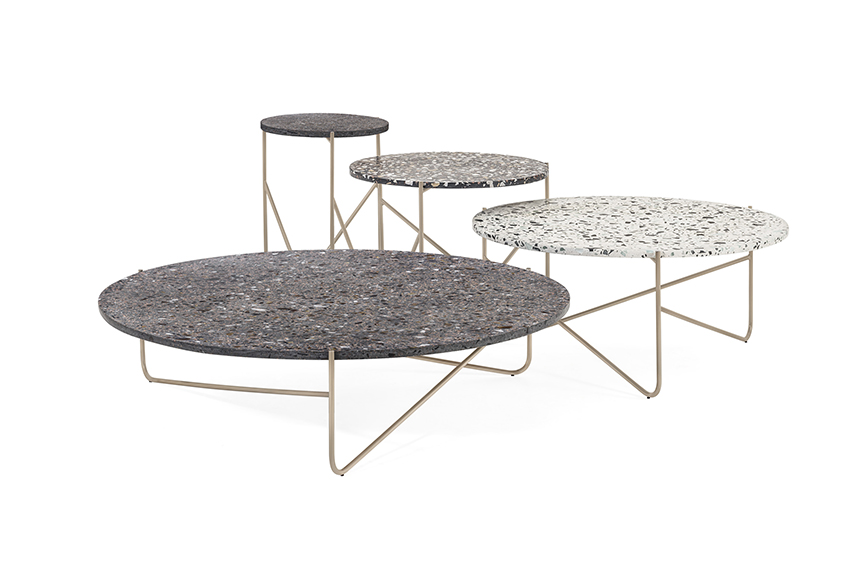
What can people expect from your new collection?
We’re now working with the concepts of a brand new edition. We’ve been inspired in the past by Japanese architecture, culture and design so we’ll keep developing that. We’ll also create a brand new chapter of furniture design with natural fibers and materials, inspired by food. We’ve also been experimenting with shape, adding volume to new pieces.
Any goals for this year, both for you and/or your brand?
Right now, I’m working on an upcoming Four Seasons hotel as well as a brand new collection of furniture design for Artefacto. There are new projects to be announced as well. But we can’t reveal much just yet.
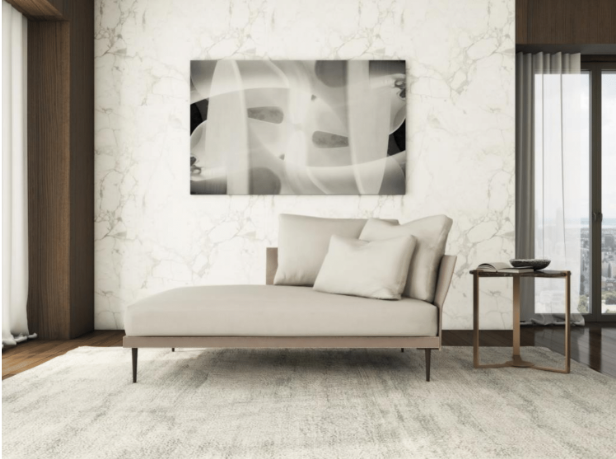
Photos courtesy of Artefacto
Slanted ceilings have made their way outside of the attic, now in living, dining and bedrooms. Designing under these slopes can be tricky, but there are ways to get around it — and even use them to make the room more elegant and spacious. Here’s how:
1. Light and Airy
Whenever you’re tight on space, adding a coat of white paint to the ceilings and walls can make all the difference. Not only does it add a simple and natural tone, but it’s malleable to design the room to your style.
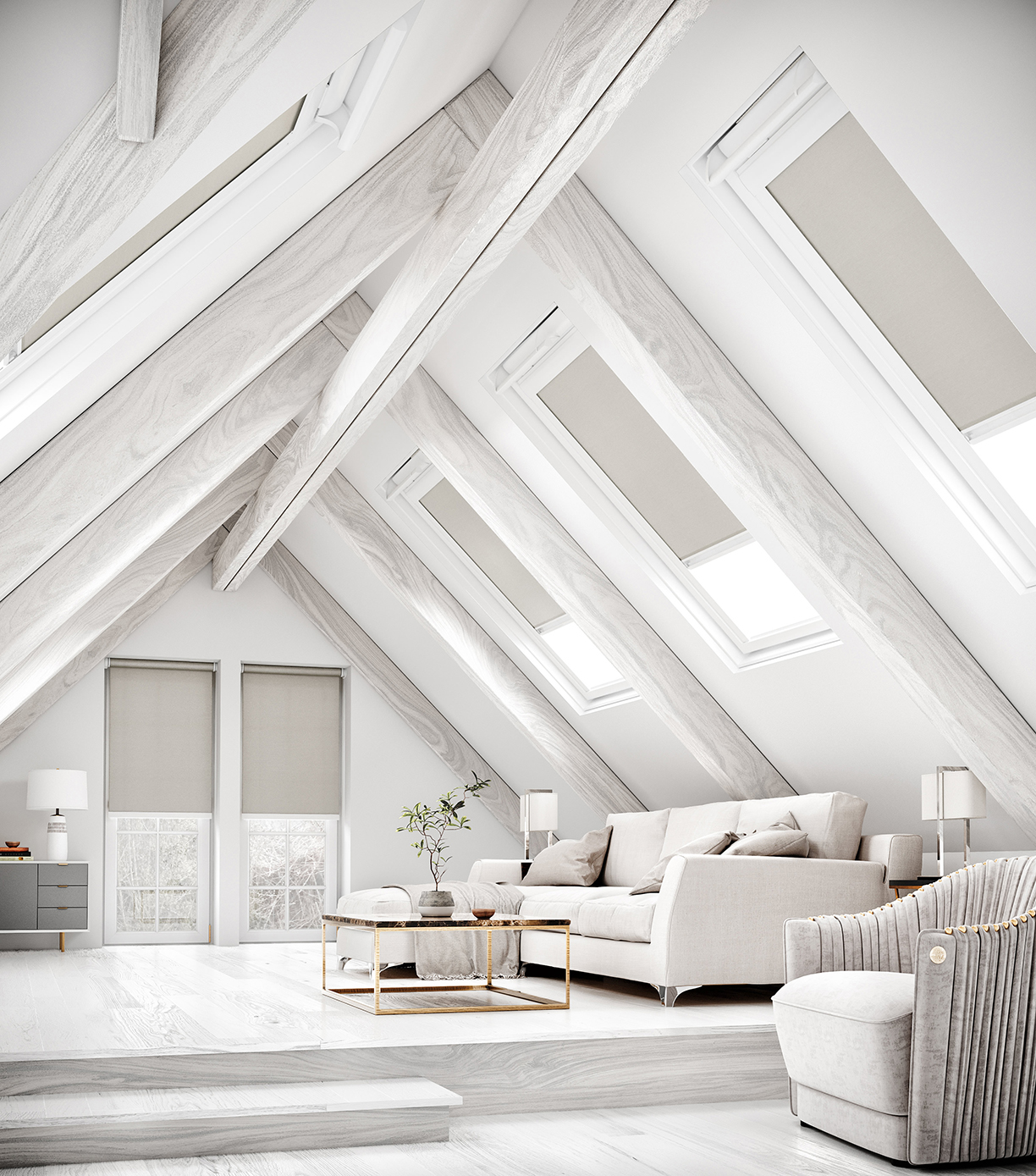
Photo courtesy of English Blinds
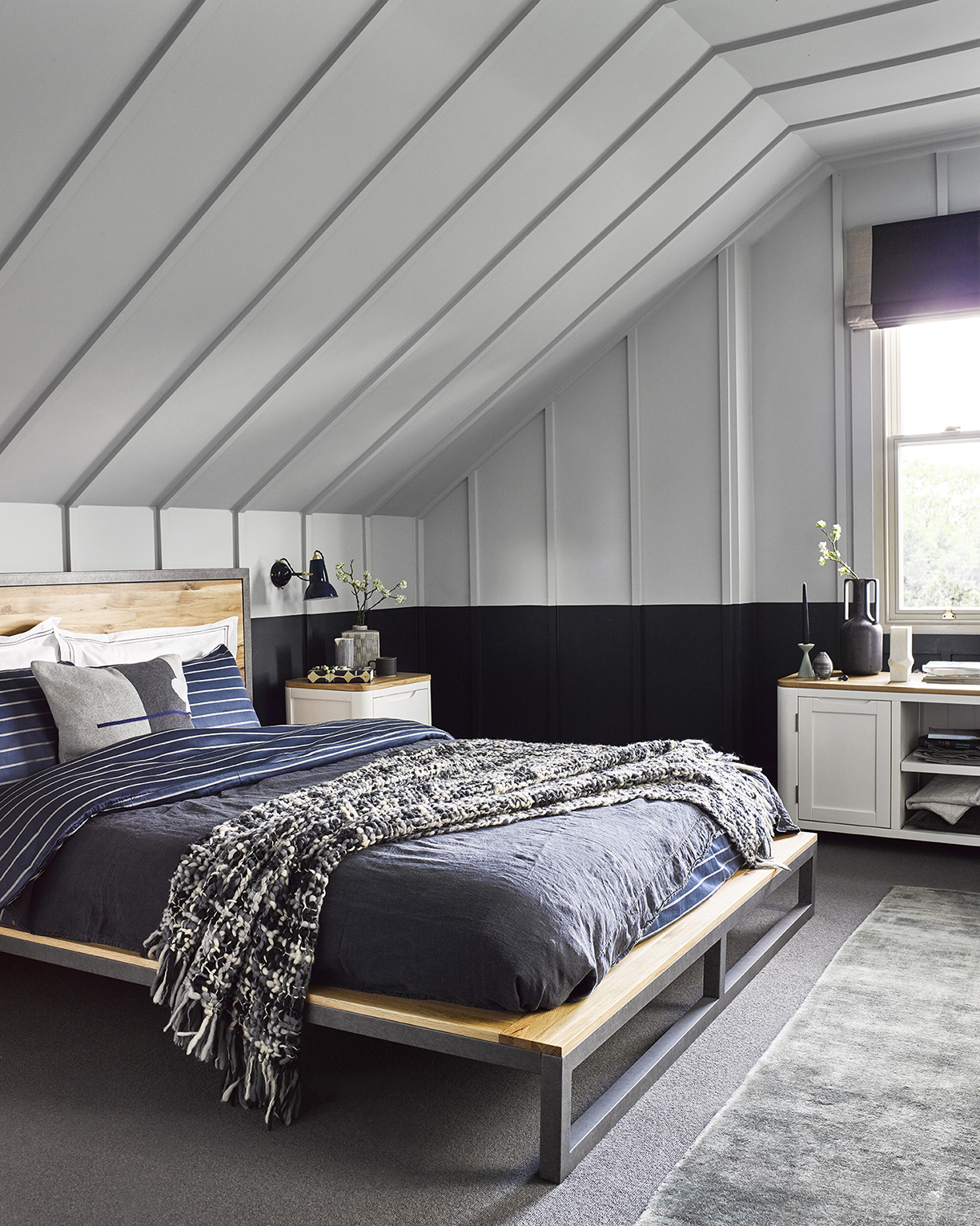
Photo courtesy of Oak Furnitureland
The blank canvas that comes with white walls and ceilings allows for limitless creativity. Create a nautical look for a more relaxed vibe, or add bold colors to make the space stand out. With a white canvas, slanted ceilings can do no harm.
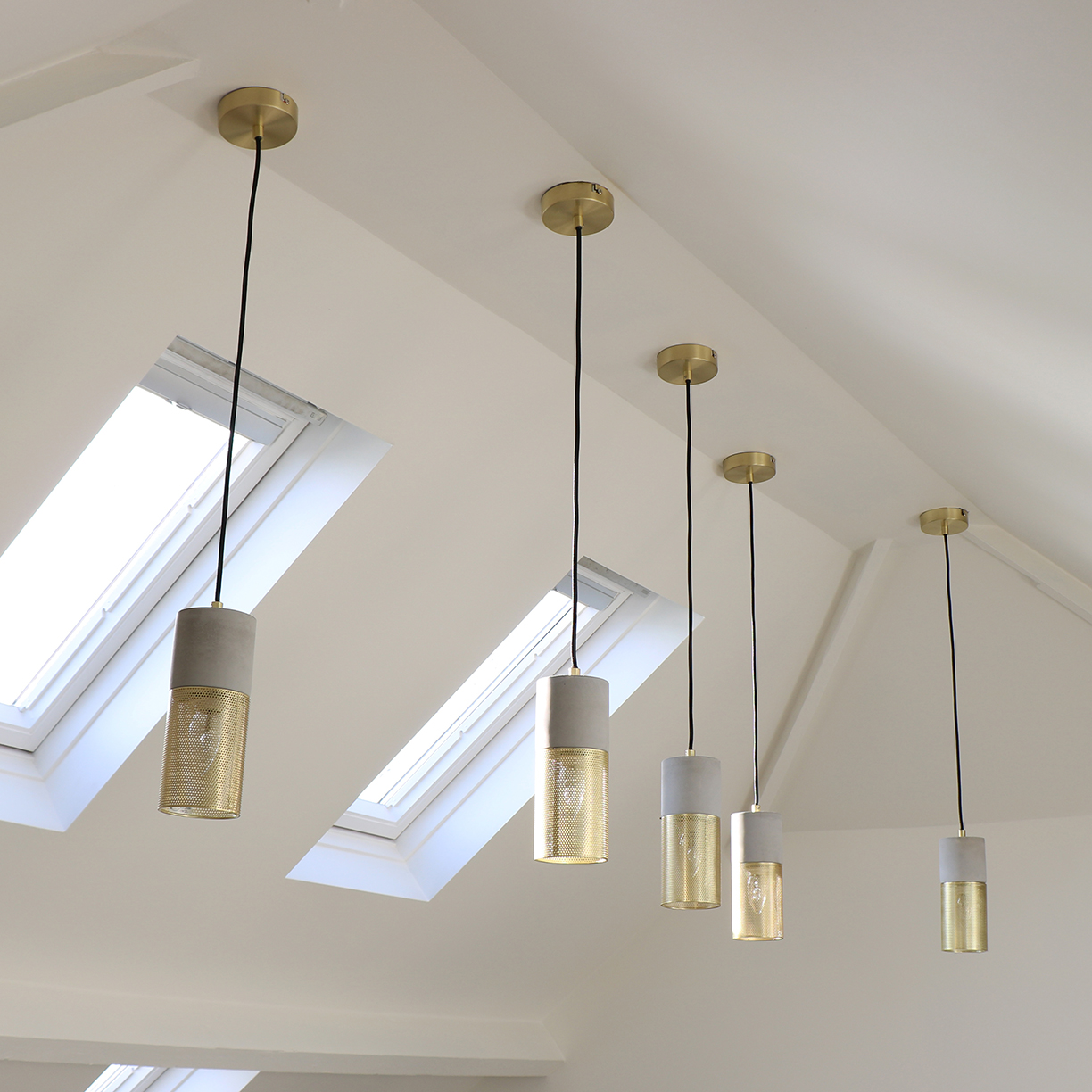
Photo courtesy of Melody Maison
2. Lighting the Room
Lighting a room can be the most difficult challenge when designing a space under slanted ceilings. Many don’t think they can use any overhead lighting, since the ceiling is on a slope. In reality, however, it isn’t impossible — it’s all a matter of picking the right light fixtures.
This is a simple yet elegant style for light fixtures that work perfectly on slanted ceilings. The wires can slightly slightly bend, so that they hang naturally.
Another great way to add natural light under slanted ceilings is with skylights. They flood the room with natural light in the daytime and add a unique and stylish look to the space.
3. A More Natural Look
Sometimes, however, it’s better to let the slanted ceilings add a unique design to the room, rather than hide them with an all-white hue. Adding wooden beams can do just the trick. When the ceilings aren’t too low, wooden beams won’t emphasize the height, but add a beautiful finish to the room instead. Light or dark browns for the wooden beams create a beautiful, natural look that goes with any style.

Photo courtesy of Covet Valley
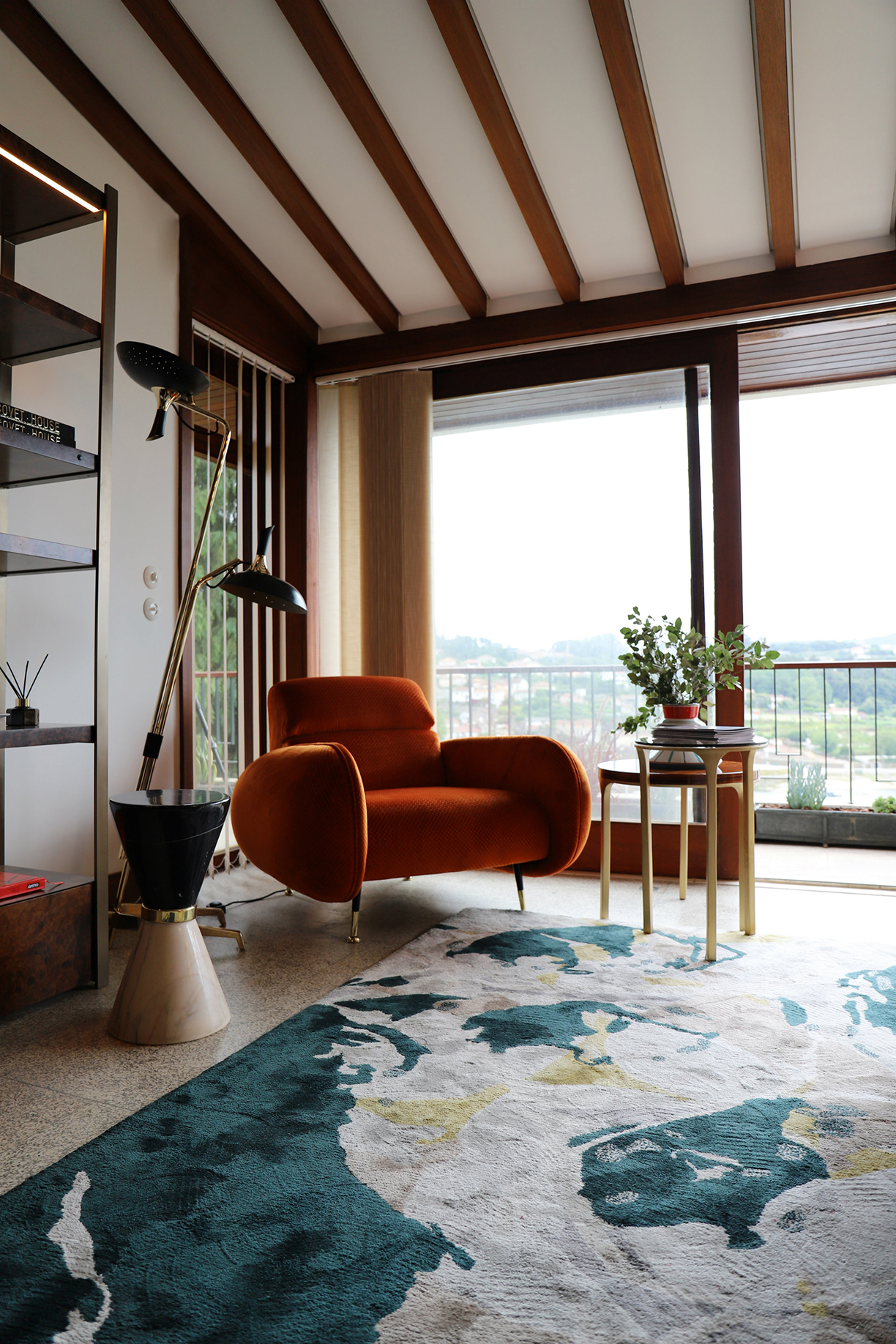
Photo courtesy of Covet Valley
Adding yellow accents to a room can be tricky: while it can transform a dull design to a bright and airy space, anything too harsh can cause the opposite effect. Luckily, there’s a foolproof way to designing a space with the color, and it can be a breath of fresh air whenever you walk into the room.

Photo courtesy of The French Bedroom Co.
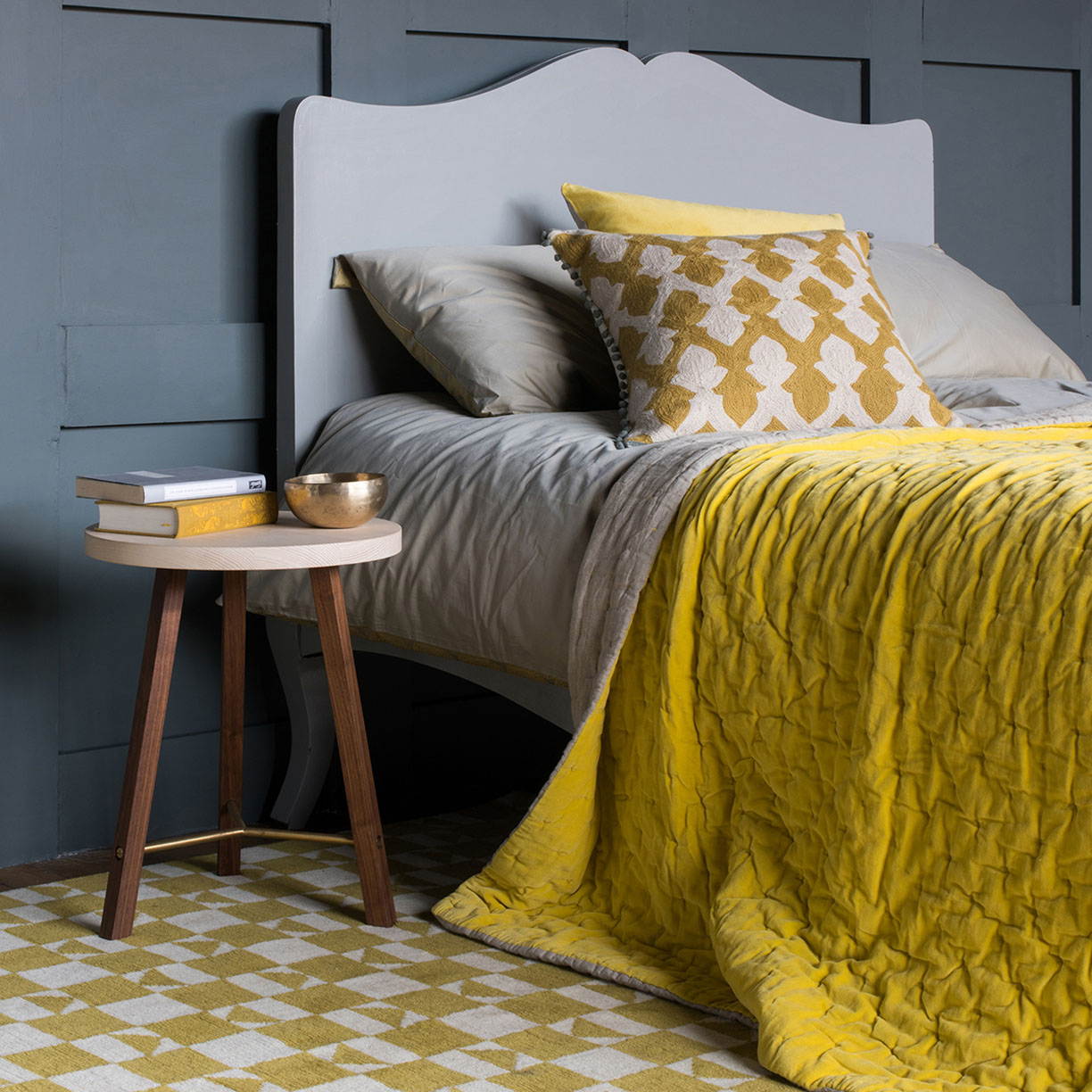
Photo courtesy of The French Bedroom Co.
When it comes to bedrooms, it can be difficult to choose the palette. While yellow walls may be too overbearing, yellow anywhere else may not be enough to do the trick. That’s why these two bedrooms have designed their spaces with two main categories: a bright yellow and a neutral color, such as grey, white or brown. They both balance each other out perfectly, with the yellow still adding that pop without being too harsh. The combination of hues adds to the comfortable and stylish decor, creating a space that’ll both brighten you up in the morning and be a calm retreat at the end of the day.
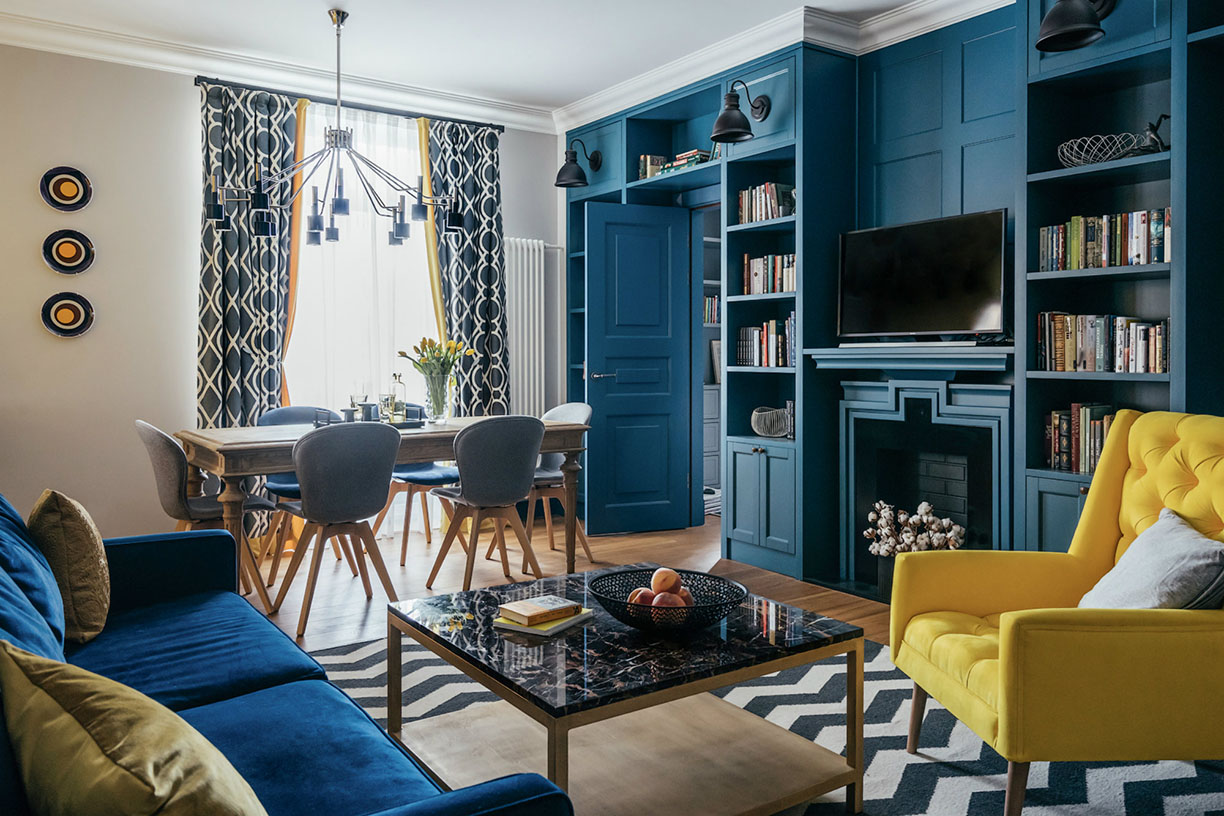
Photo courtesy of DelightFULL
Creating a living room with just a hint of yellow can add the perfect accent. This room that’s almost completely blue has a beautiful addition found with the bright yellow chair. It creates the perfect balance between the colors, creating a space with a unique and alluring charm.
The main trick with designing a room around the color yellow is to pick the right tones. The yellows shouldn’t be too harsh or overbearing, otherwise it will bring an unappealing style to the space. Meanwhile, the main colors of the room should be more neutral yet distinct from the yellow. Clear whites and dark browns and neutral grays play well here.
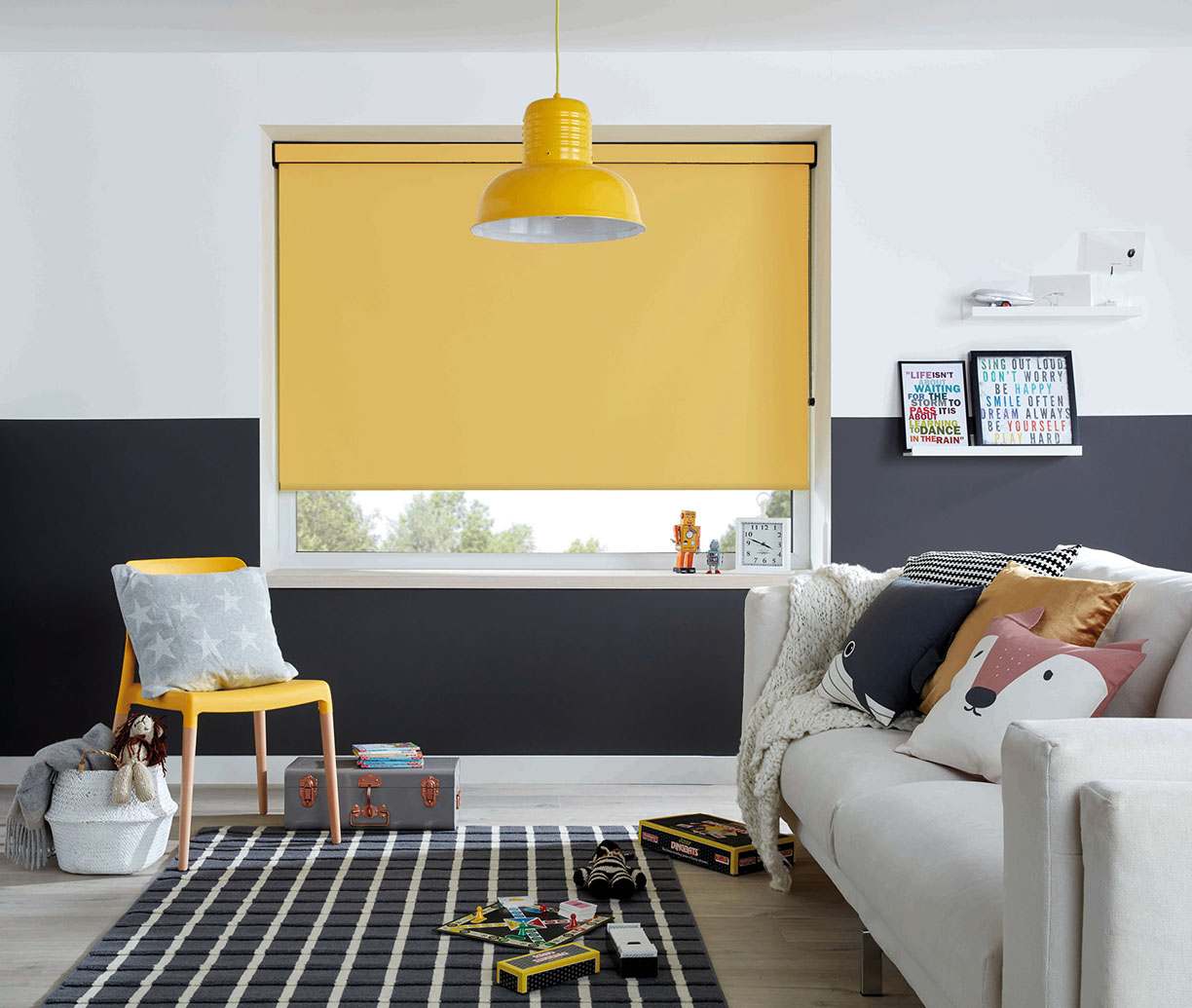
Photo courtesy of English Blinds
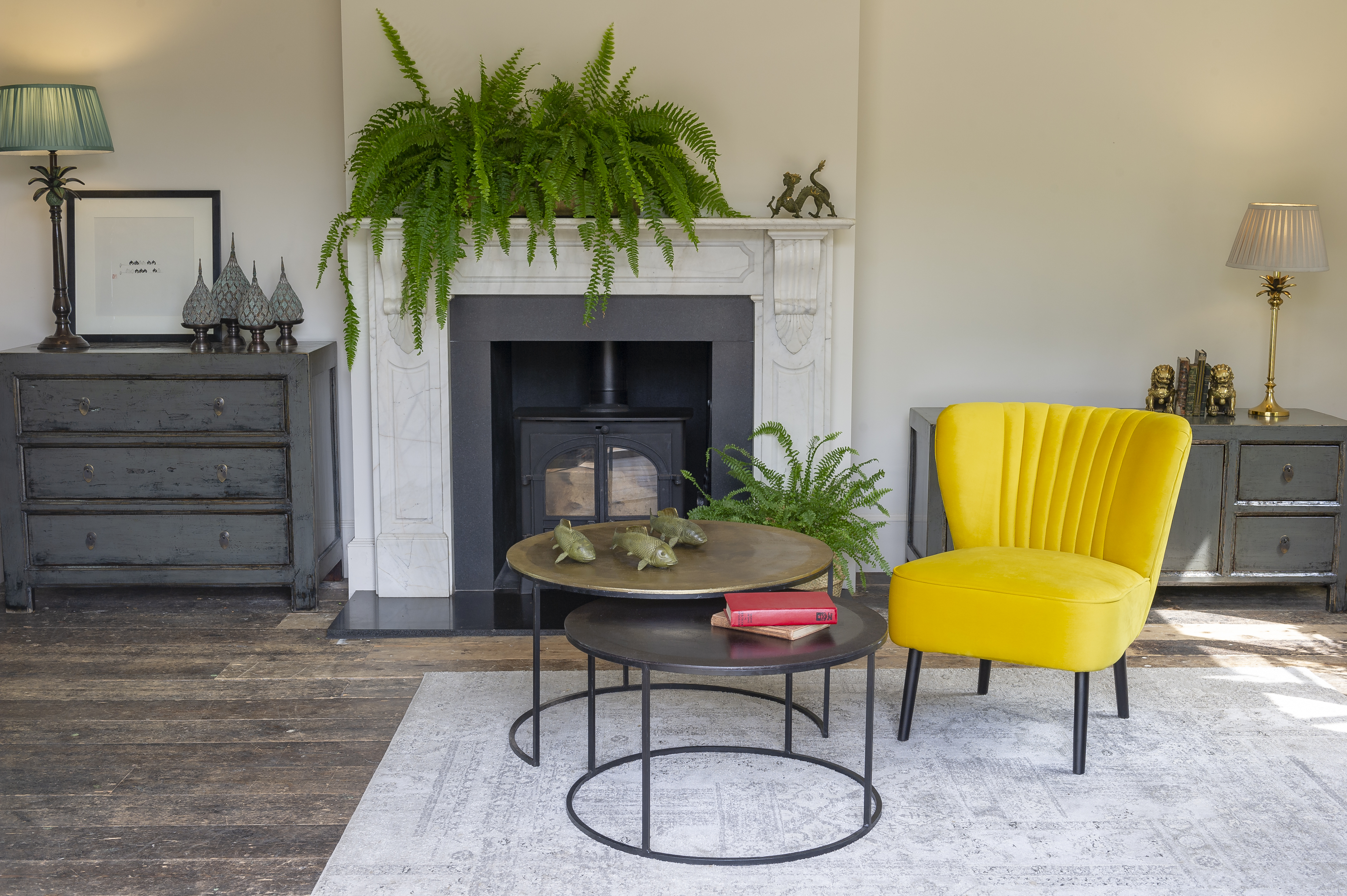
Photo courtesy of Orchid Furniture
Incorporate fresh plants to add another hint of color without making the space look disorganized or messy, and you’re on your way to creating the perfect space that’ll brighten up your day the moment you walk in.
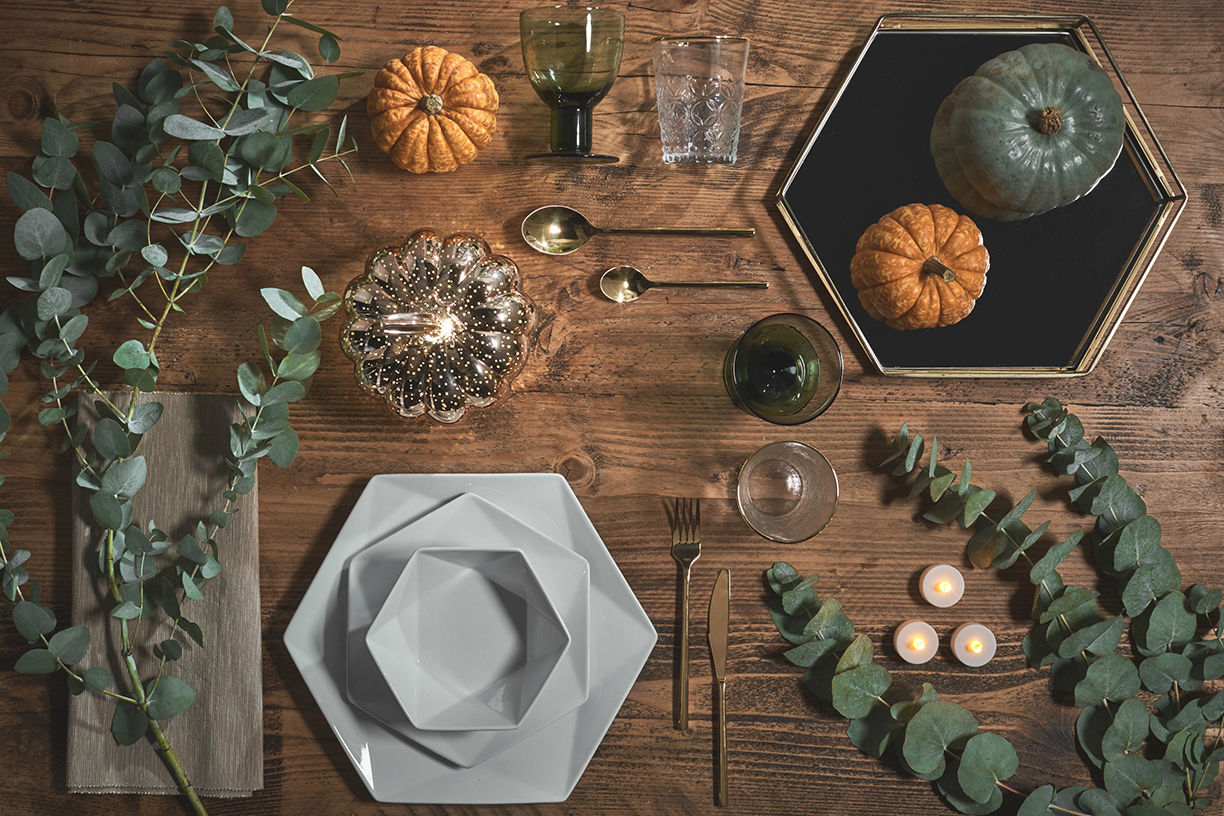
Photo courtesy Lights4fun.
As the summer passes and transitions to fall, there are several ways you can incorporate fun, easy changes to your home style to showcase a sleek, sophisticated style that flows perfectly with the season. Rebecca Snowden, Interior Style Advisor at Furniture Choice Limited, shares three key décor tips to style a cozy home for Autumn 2019.
Jewel Tones and Inviting Textures
This autumn, let rich jewel tones like deep mauve, sapphire blue and dust pink take center stage. “Embrace the sophistication of the season in all its moody glamour,” says Snowden.
A lush black velvet bed instantly adds elegance to a bedroom and sets a luxurious base to build upon. Layer deep, rich tones via opulent textures like velvet and faux fur to create a lavish, comfortable setting.
Light up the space with distinctive fixtures to enhance the overall ambiance. “Individual pendant bulbs give off a modern, almost industrial feel while sleek, standing lamps are practical and stylish,” Snowden notes. Display fresh flowers for a burst of life or dramatic floral artwork with contemporary charm as final touches.
Photo courtesy LUXXU Home.
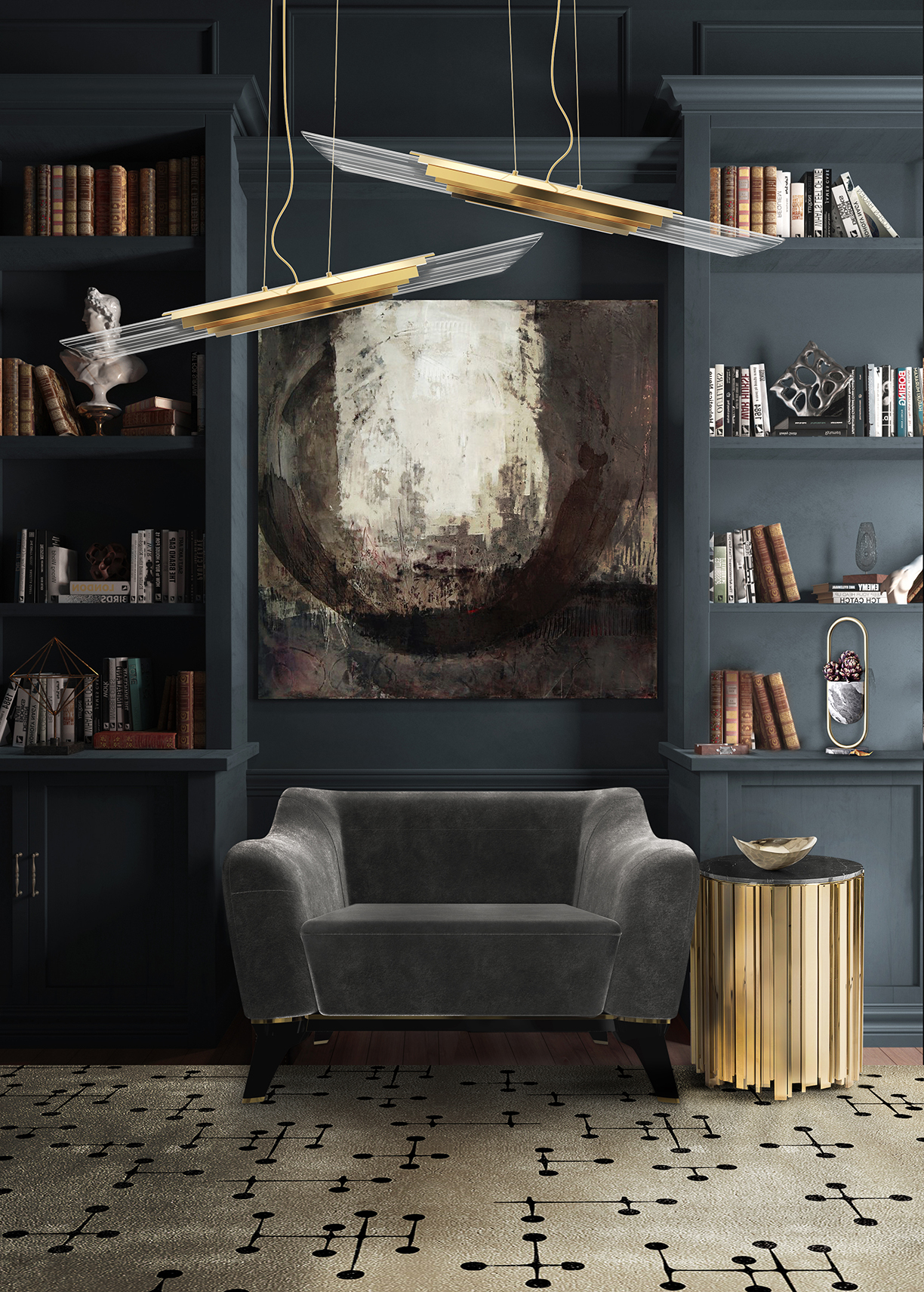
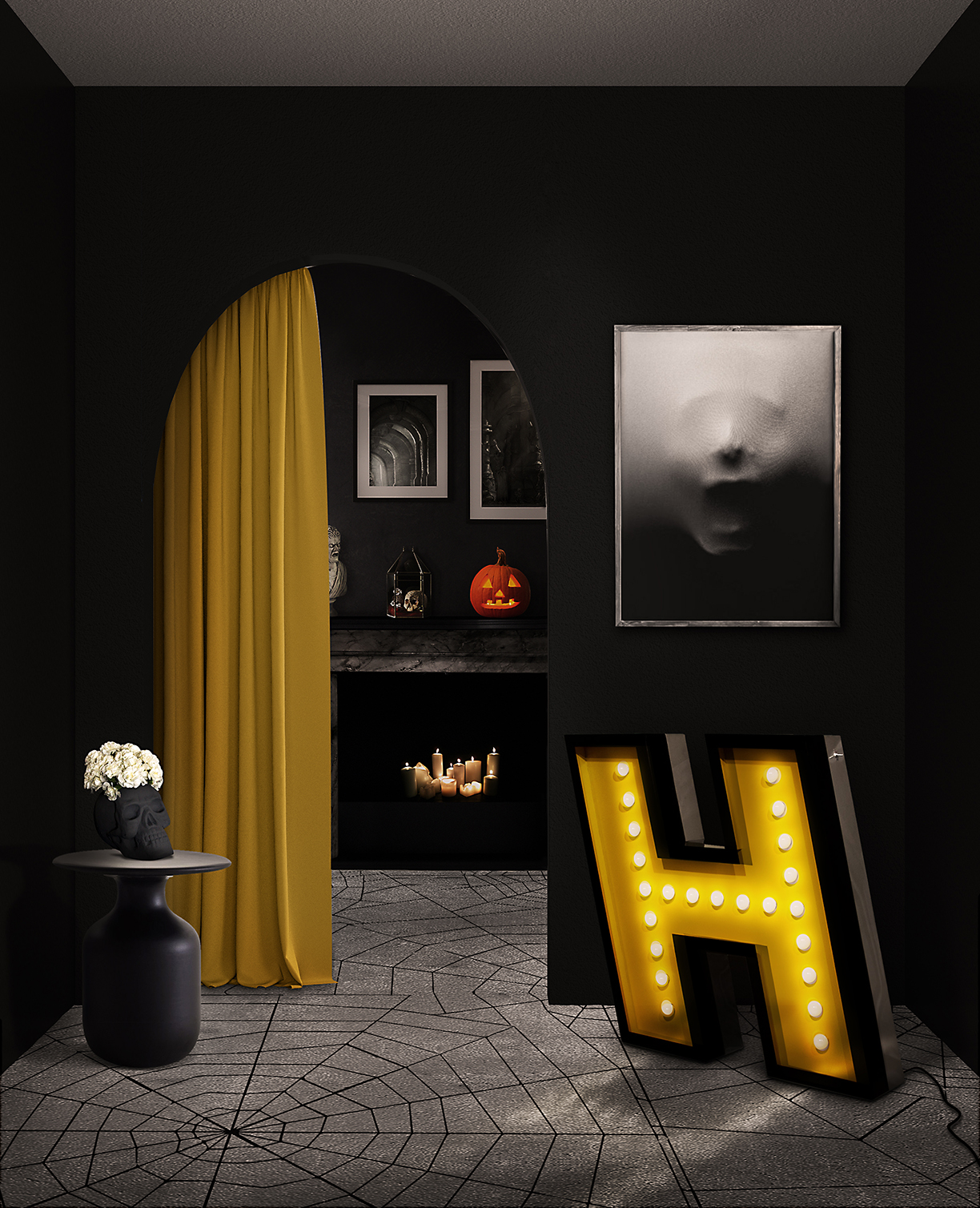
Black and Yellow – A Perfect Pair
On a brighter note, pairing black and yellow results in a lighter, modern take on autumn décor. One part dark, one part festive, and altogether stylish. Choose a dark yellow like mustard, in homage to autumn’s signature leaves.
“This trendy color contrasts nicely with a sleek black leather sofa to produce an edgy and seasonal-appropriate palette,” says Snowden. Go bold with a mustard feature wall or start small with yellow cushions, rugs and planters.
With this style choice, Snowden also recommends keeping the rest of the room simple and opt for pieces with clean lines to prevent overwhelming the senses. Add warmth with a soothing accent color like forest green, achieved through incorporating dark green, leafy plants. These not only bring in life but also a sense of freshness, all while contributing to the overall style.
Photo courtesy DelightFULL.
Accessorize
In the spirit of transitioning into the season, get crafty and DIY some autumn-themed accessories. “Metallic accessories are a simple and effective way to add a pinch of glamour and light to any space,” Snowden advises.

Photos courtesy Lights4fun.
